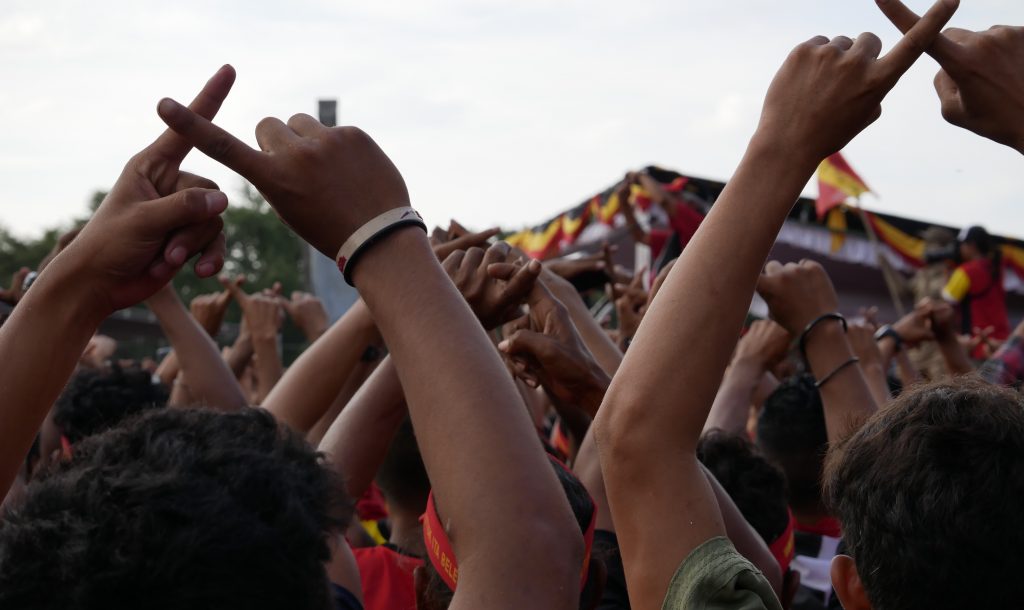What are the distinctive features of elections in Timor-Leste, Southeast Asia’s youngest democracy? The three authors have conducted research on elections in other parts of Southeast Asia and traveled to Timor-Leste for research on the dynamics of the 22 July 2017 parliamentary elections. (Presidential elections were held separately, in March 2017.) We offer this photo essay of the election campaign, as some first impressions of what distinguished this election from those found in other parts of Southeast Asia.
One of the striking features of elections in Timor-Leste is how party-focused they are, in contrast to elections in places like Indonesia and the Philippines, where individual candidates frequently organise their own campaigns, leading to great variation in the design of campaigns from place to place. Elections campaigns in Timor-Leste are much more centralised and coordinated; they reminded us much more of elections in Malaysia, where party symbols and platforms also count a great deal.
21 parties competed for a share of 65 seats, among an electorate of about 760,000 (around 120,000 of them first time voters, and from a population of approximately 1.2 million). The big players were the large ‘historic’ parties, based in the 1975–99 resistance, Congreso Nacional de Reconstruçao de Timor-Leste (CNRT) and Frente Revolucionária do Timor-Leste Independente (Fretilin). Also standing at least a decent shot of securing seats were Partido Libertaçâo Popular (PLP), Paritido Democrático (PD) and Partido Kmanek Haburas Unidade Nasional Timor (KHUNTO). [Editor’s note: Fairfax reports preliminary results here.]
Allocation of seats is by proportional representation, with a single national district and a 4% threshold (raised this election from 3%) for a party to enter parliament. It is this national party list system, as well as the legacies of the liberation struggle, that have produced such a party-focused contest.
Unlike in Malaysia, where most parties’ election meetings are rather sombre affairs, in Timor-Leste rallies are huge, highly diverse, and tremendously entertaining. T-shirts, hand gestures, songs, and other symbols generate team spirit. Attendees are provided with transport or a coupon for petrol, a party shirt, and a meal. In the big Dili rallies we attended, men dominated the area in front of the stage, including in the ‘mosh pit’ right in front, with a definite hint of machismo. But plenty of women also participated, and enthusiastically.
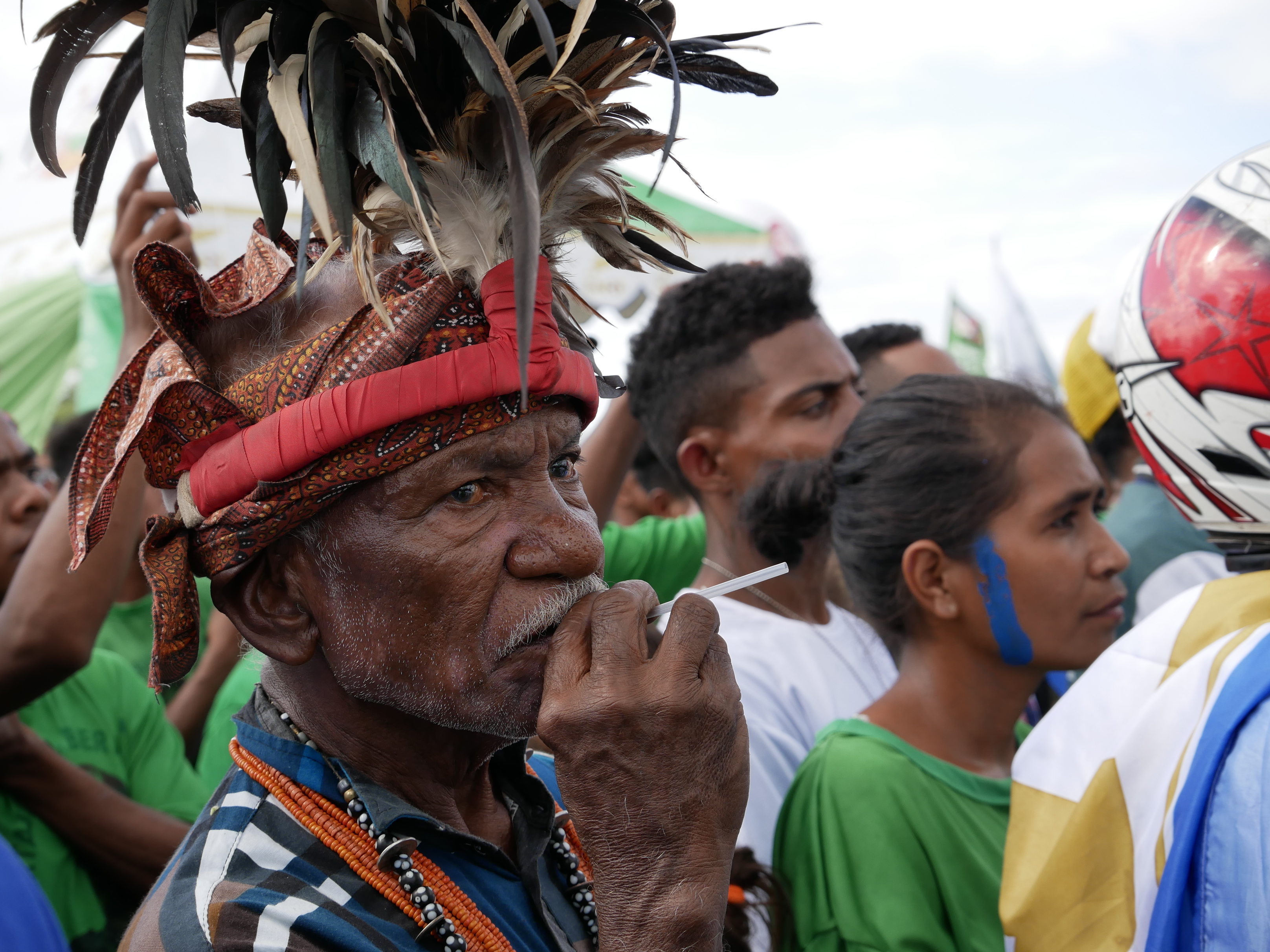
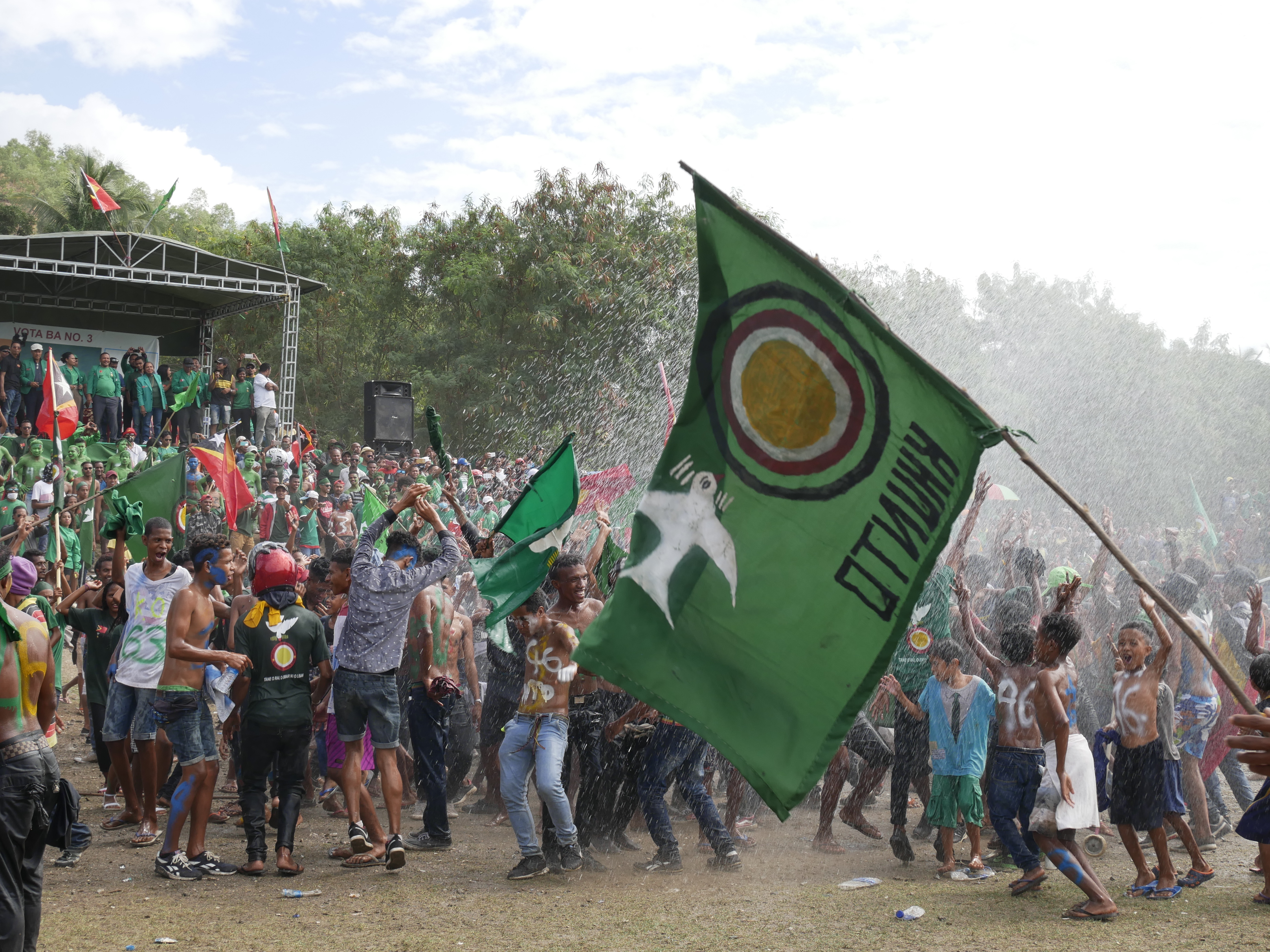

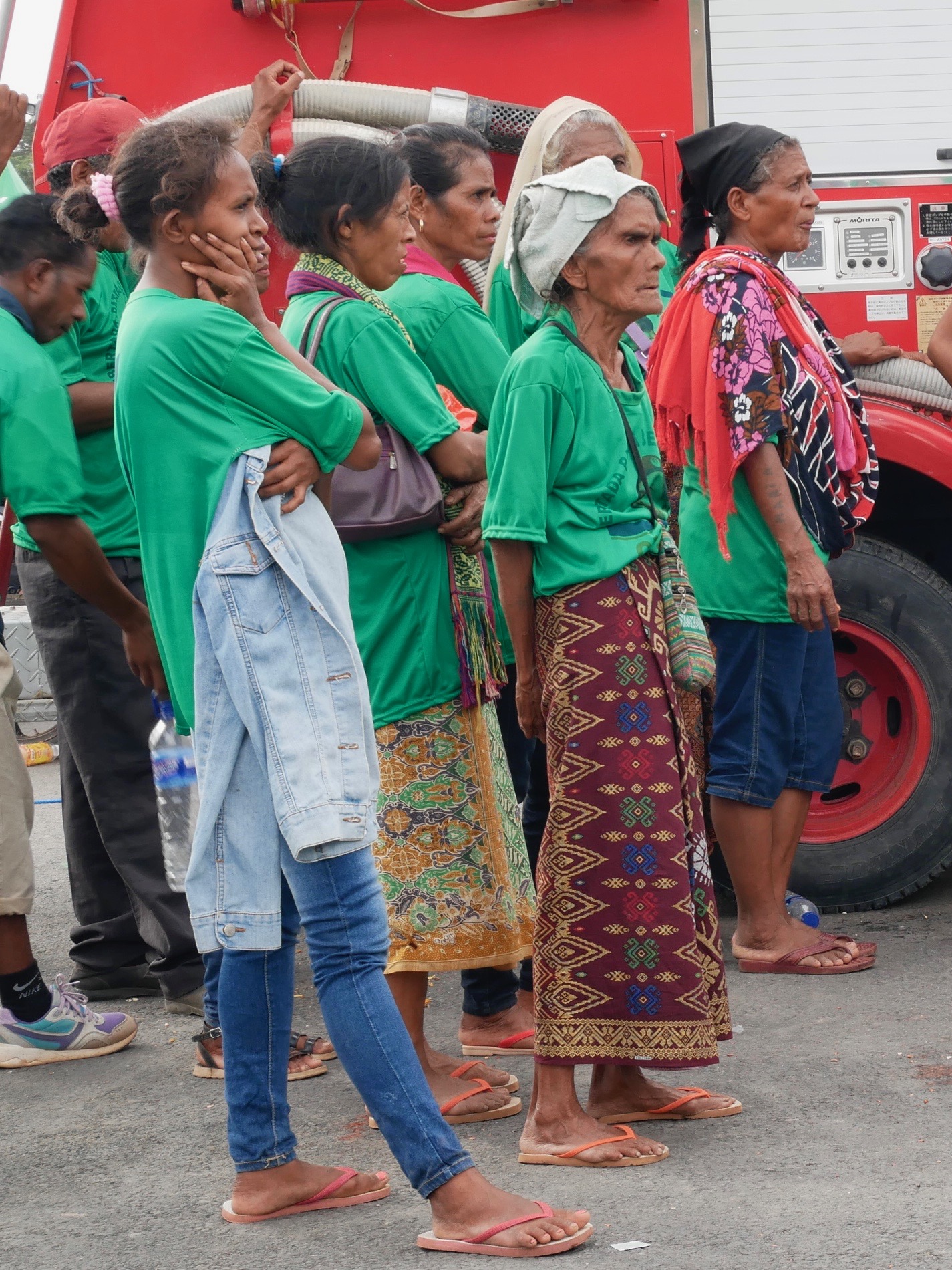 Rallies include speeches, but also music, dancing, gimmicks, and theatricality, from fun with a fire hose at a KHUNTO rally, to a lengthy and melodramatic release of doves overseen by former president and prime minister, and current CNRT leader, Xanana Gusmão. Body paint is popular, especially among young men, heat and dust notwithstanding. And of course, almost everybody takes selfies.
Rallies include speeches, but also music, dancing, gimmicks, and theatricality, from fun with a fire hose at a KHUNTO rally, to a lengthy and melodramatic release of doves overseen by former president and prime minister, and current CNRT leader, Xanana Gusmão. Body paint is popular, especially among young men, heat and dust notwithstanding. And of course, almost everybody takes selfies.
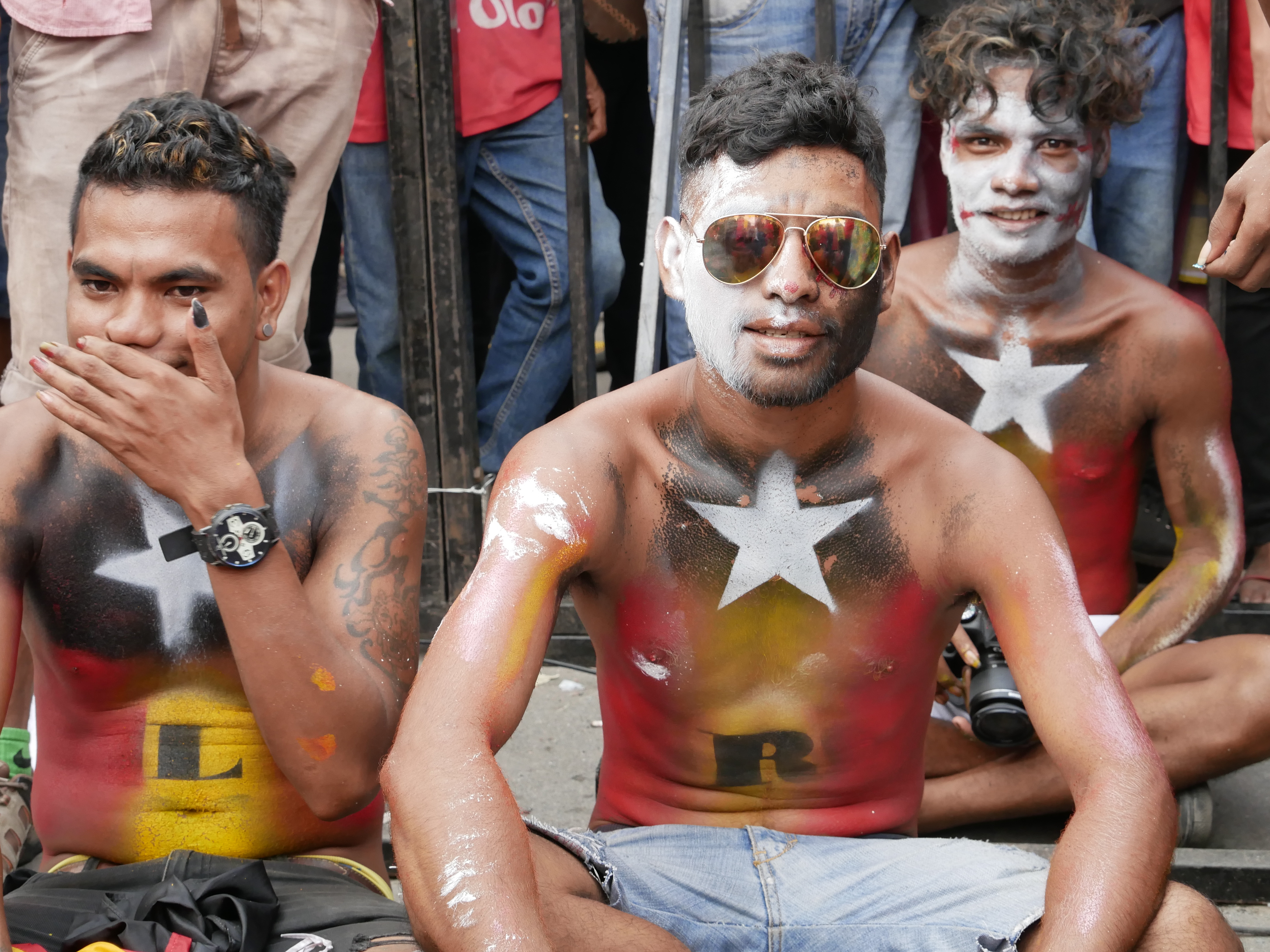
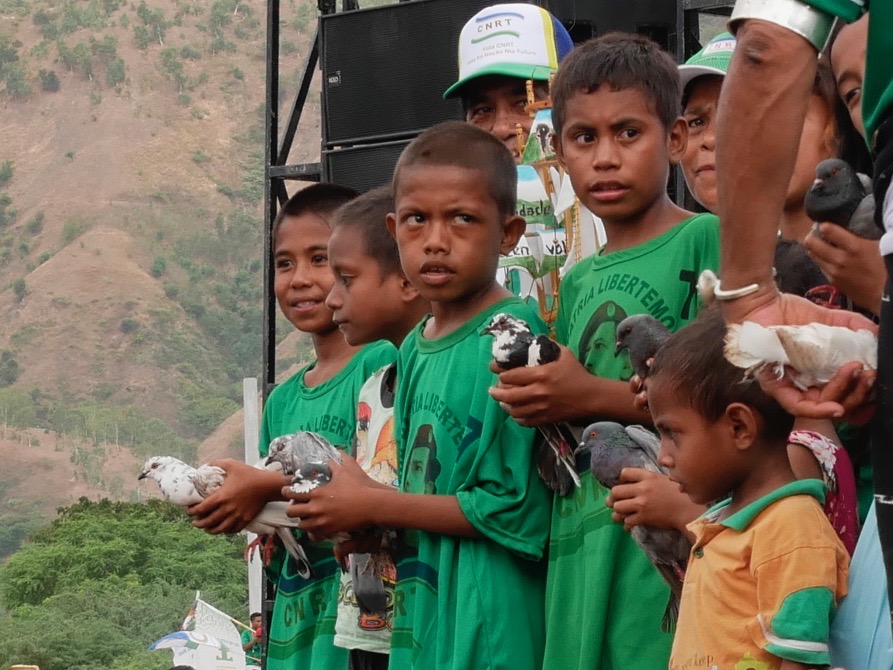
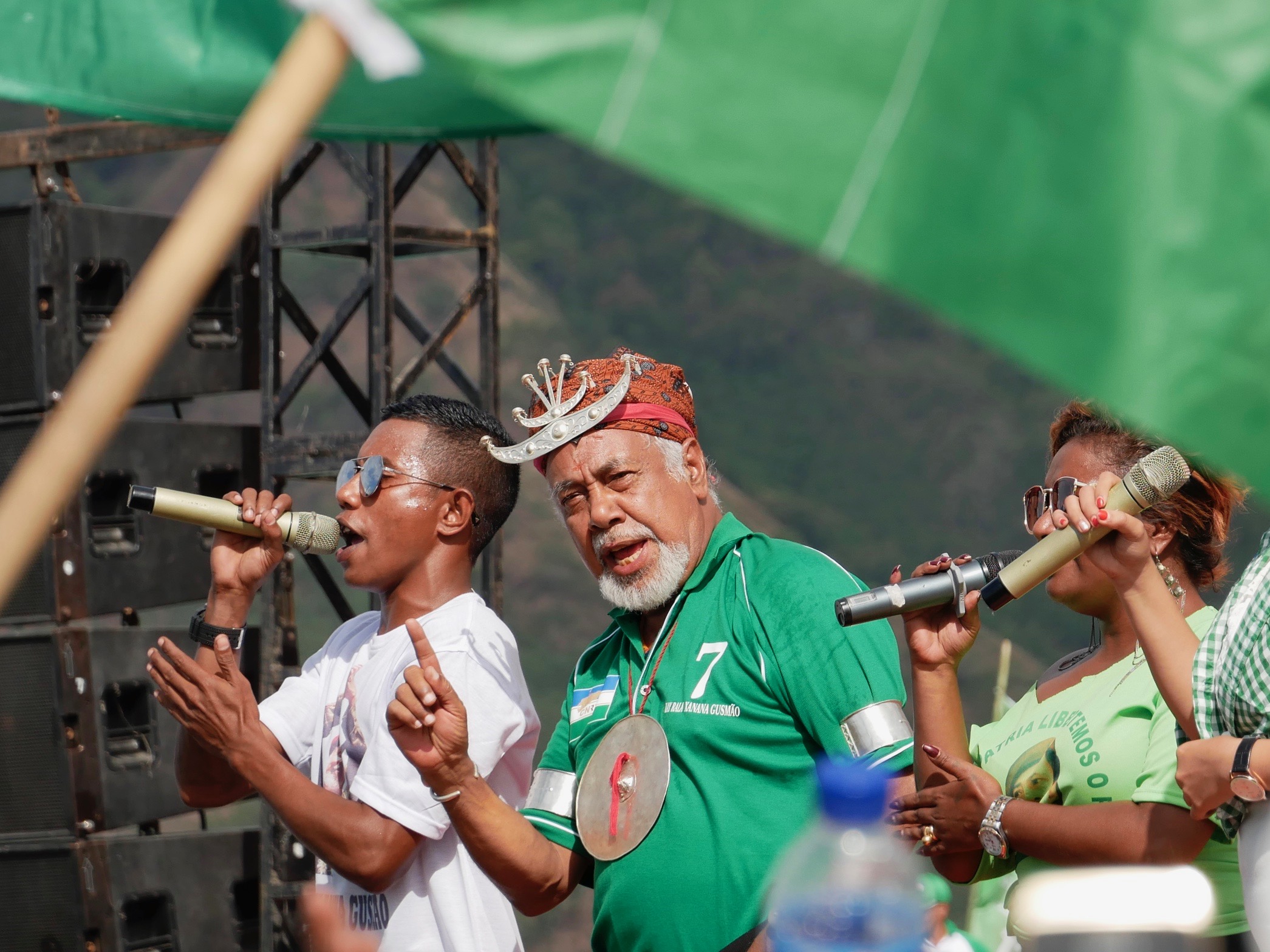
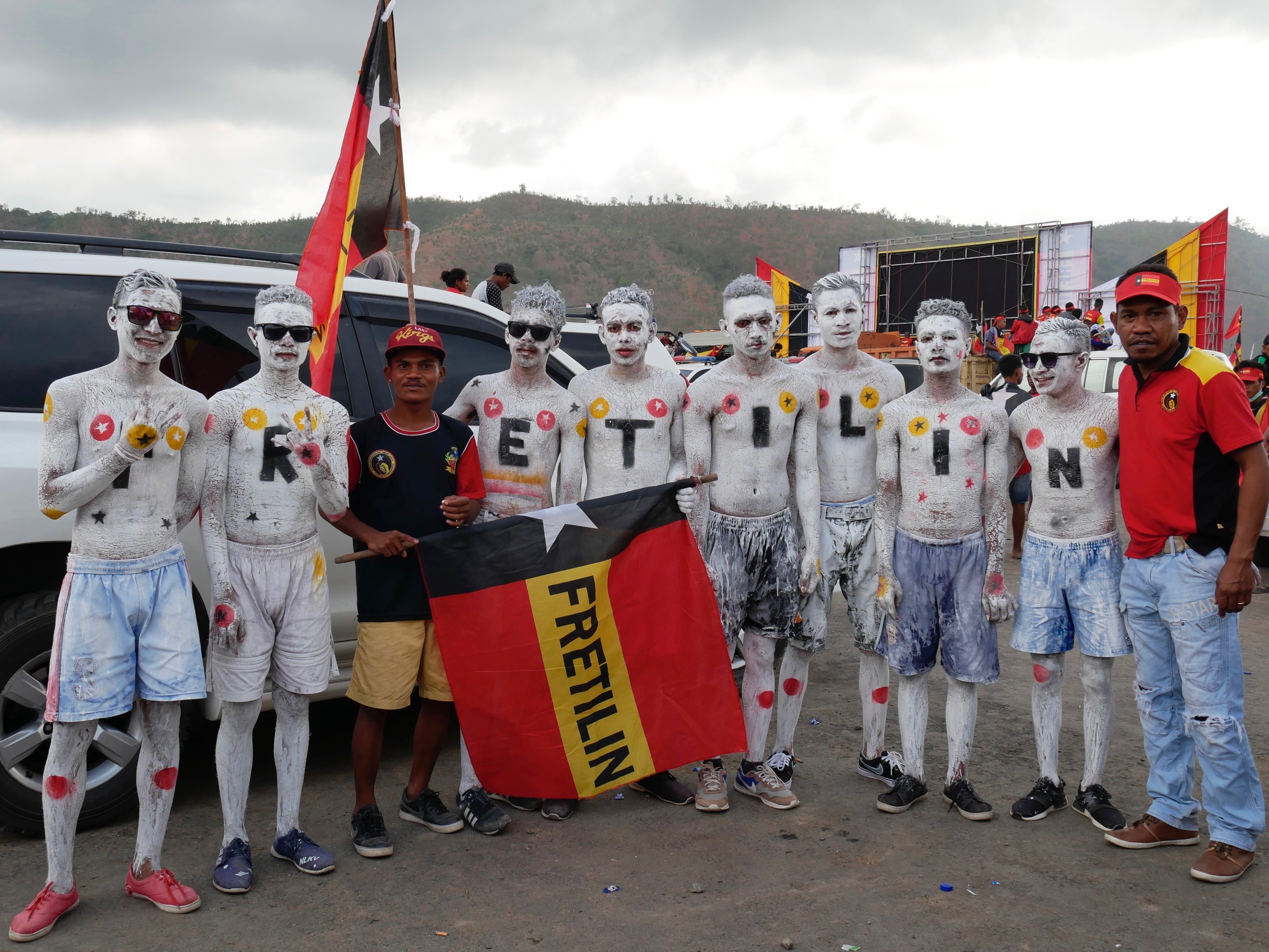
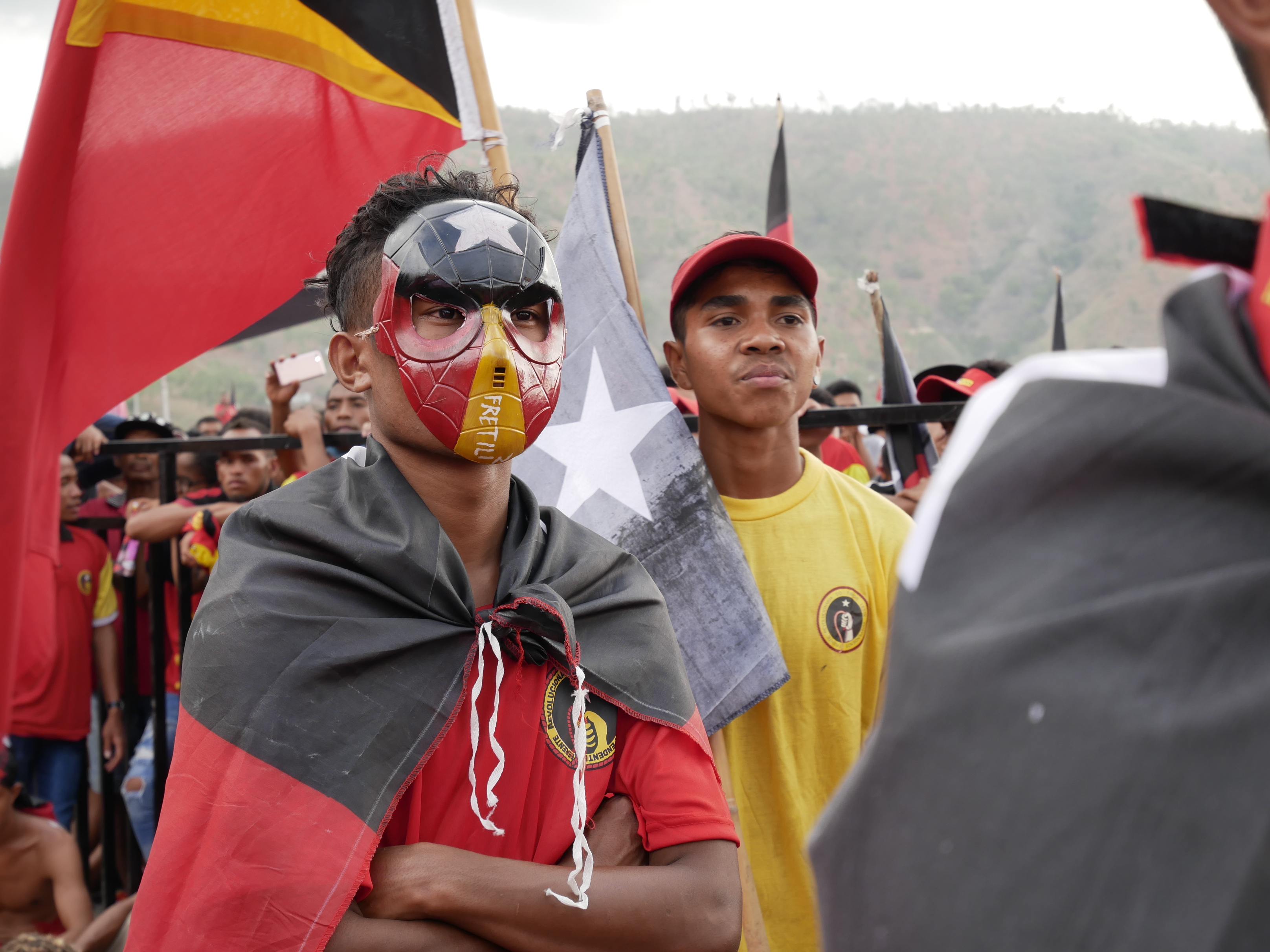
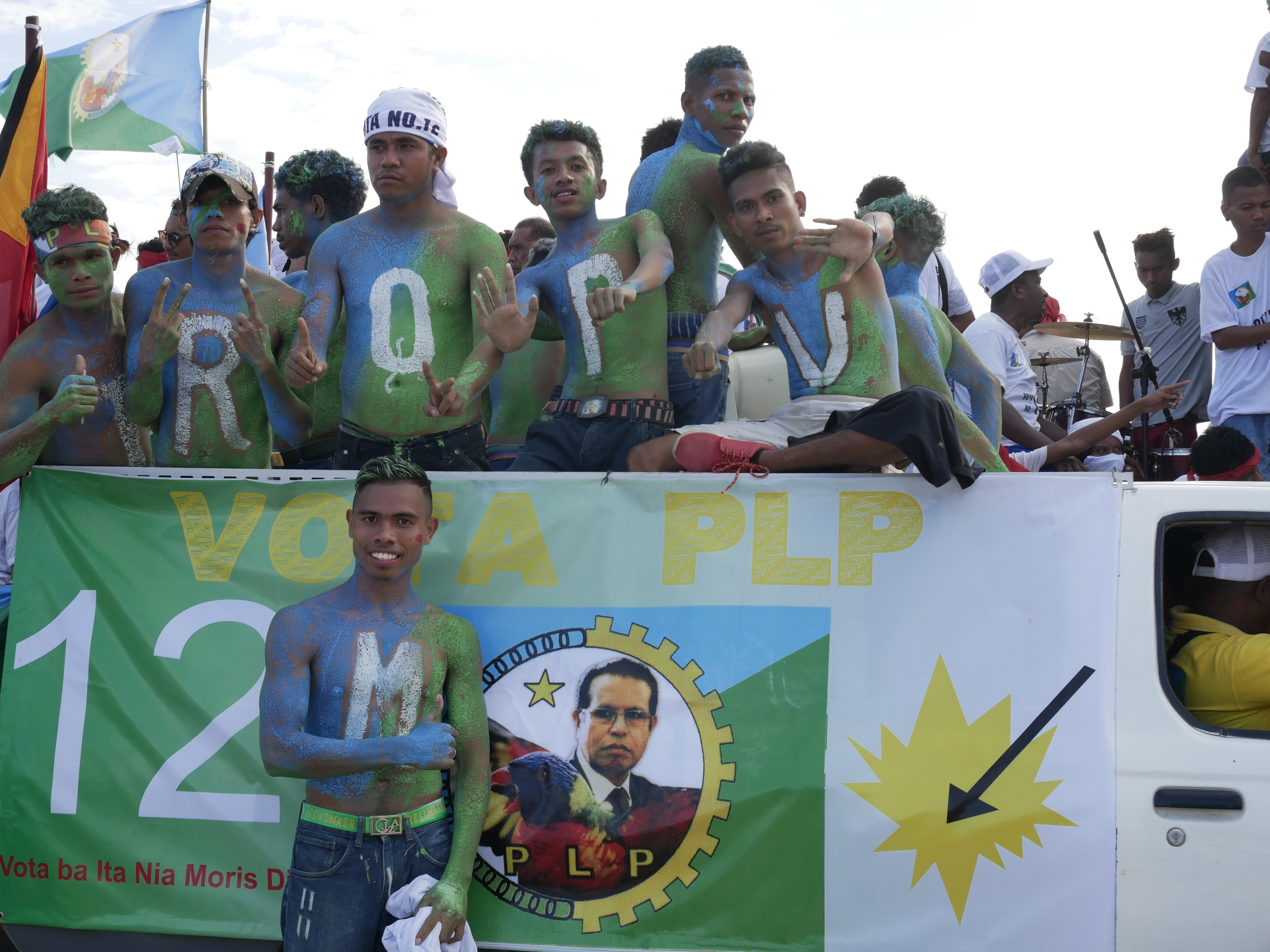 These rallies allow parties to test their mobilising capacity. They indicate whether local coordinators are able to deliver their assigned quota of attendees, and by extension whether they can be trusted to coax voters to the polls.
These rallies allow parties to test their mobilising capacity. They indicate whether local coordinators are able to deliver their assigned quota of attendees, and by extension whether they can be trusted to coax voters to the polls.
They are also a show of force, intended to impress both voters and other parties. However, in truth, turnout for rallies is at best a weak indication of turnout for the polls. Many in the crowd were clearly too young to vote; others are romantis, or rombongan makan gratis: retinues for hire, for the price of a meal.
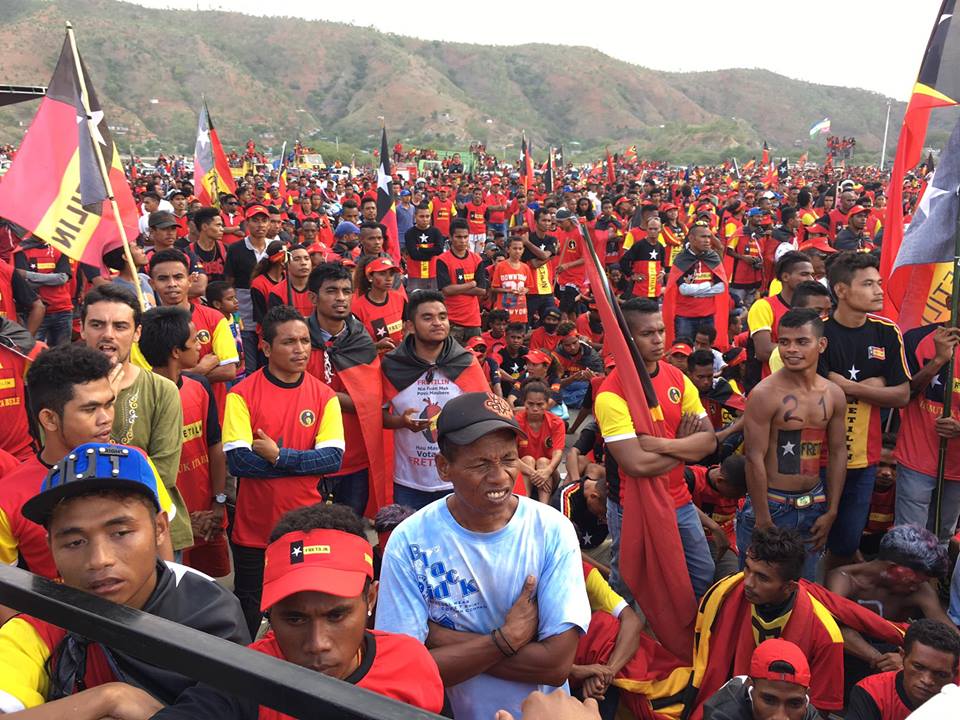
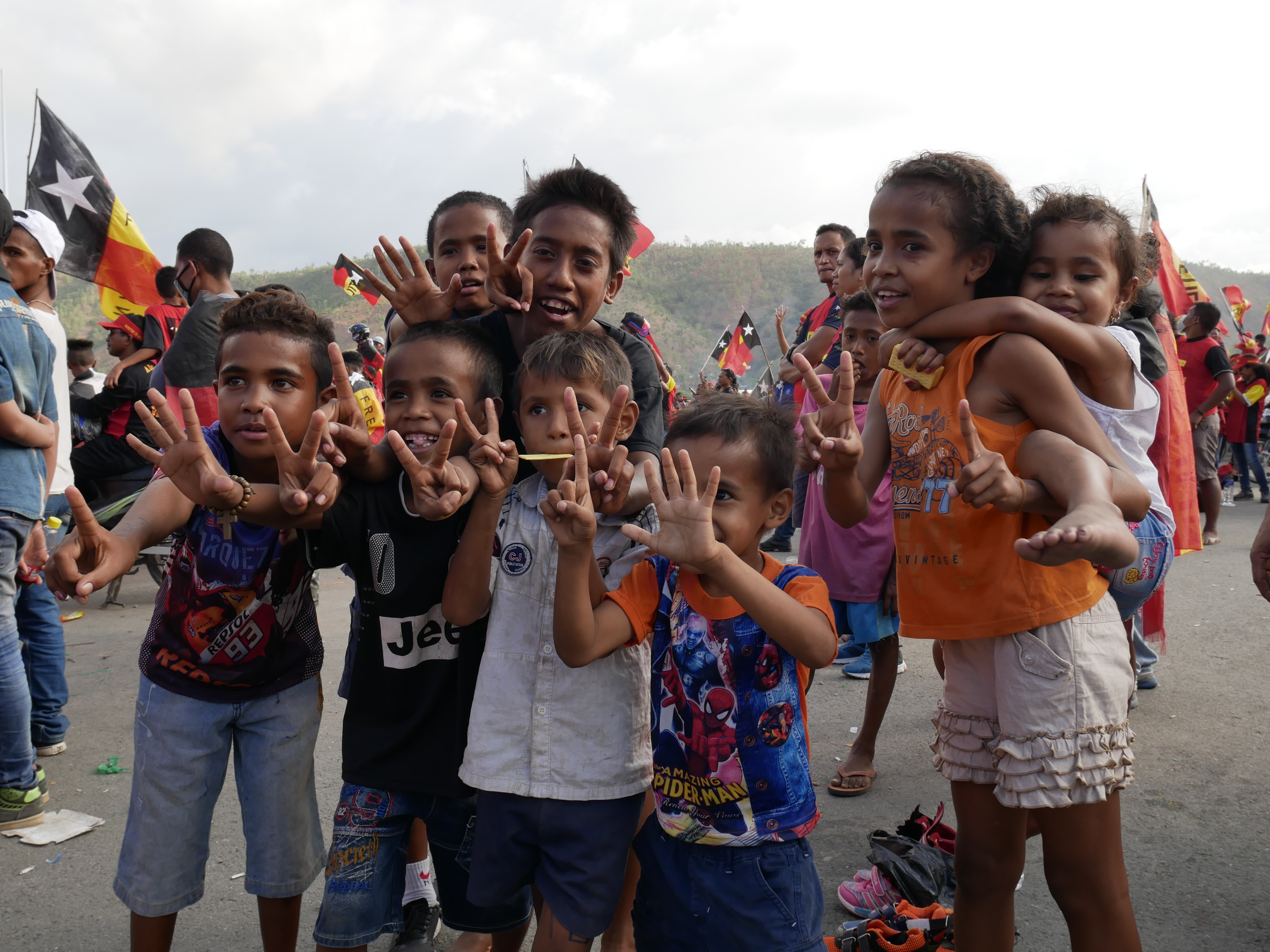
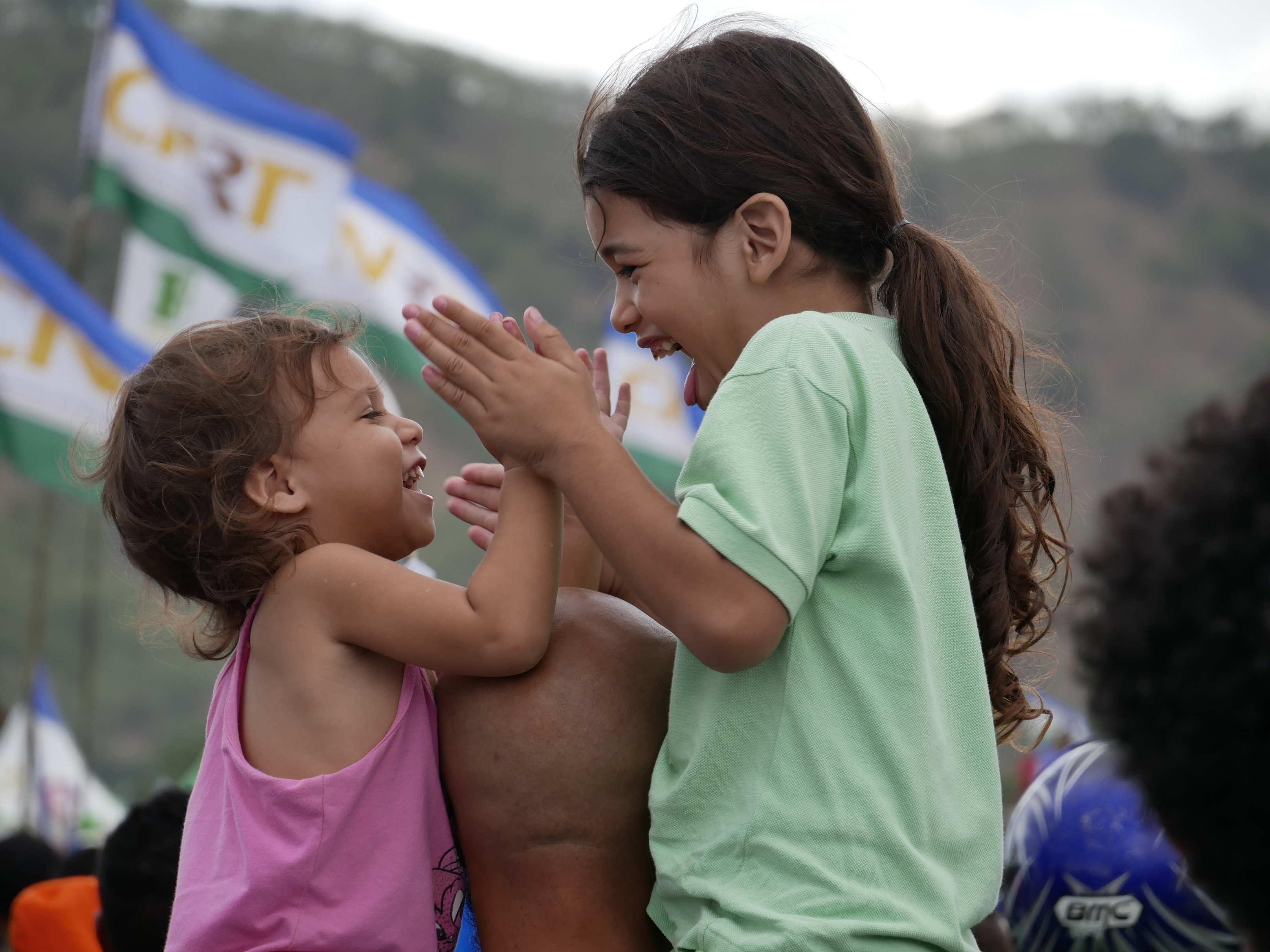
Convoys are a really big thing. The streets get so clogged with trucks, cars, and motorbikes carrying party supporters that some cannot make it to the rally before it ends. Others line the streets to watch. By far the largest rally we witnessed was the final Fretilin rally last Wednesday. The all out madness of the convoys, as tens of thousands of people wearing party colours creep along the roads, some singing, dancing, chanting, waving flags, or blowing horns as they go, is in stark contrast to how muted the campaign is otherwise: posters, billboards, and flags are far less numerous here than elsewhere in the region.
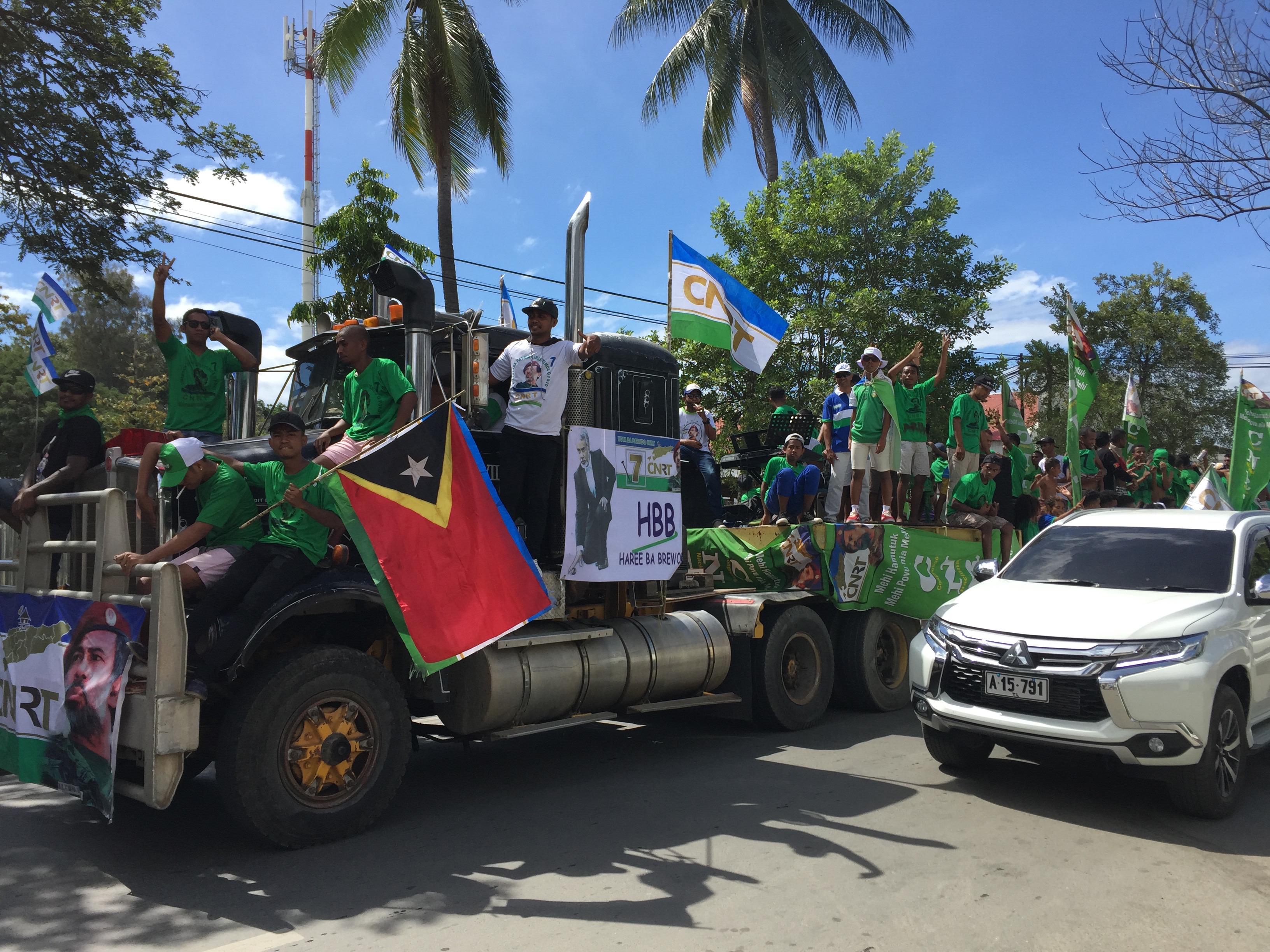
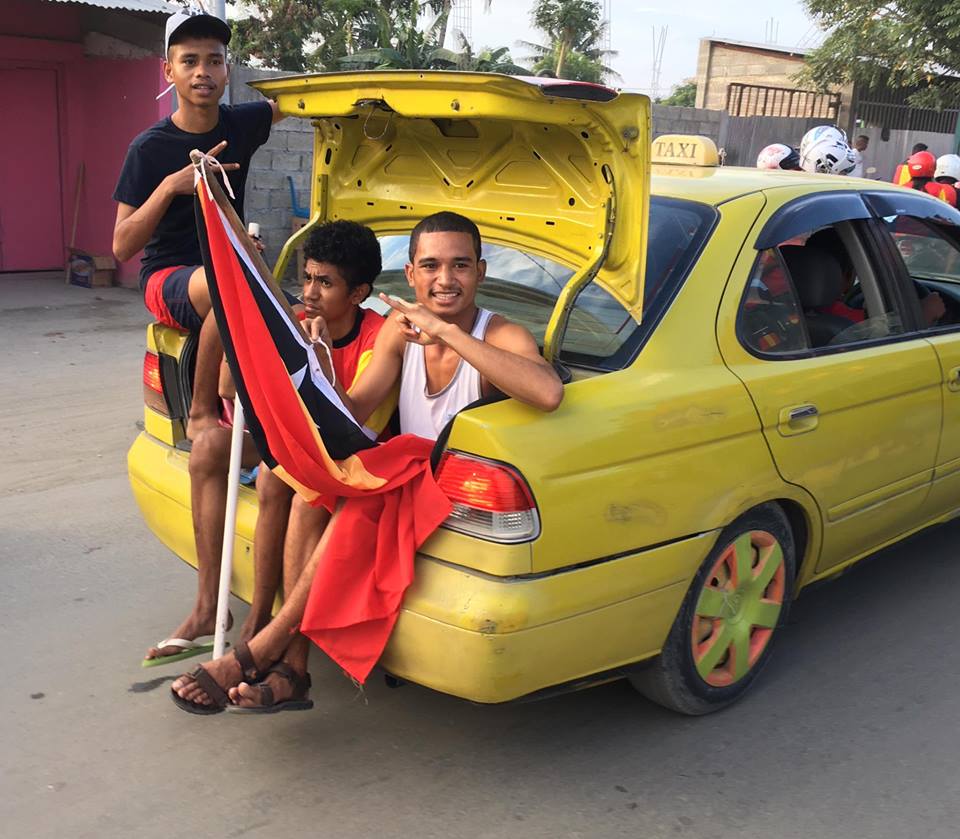
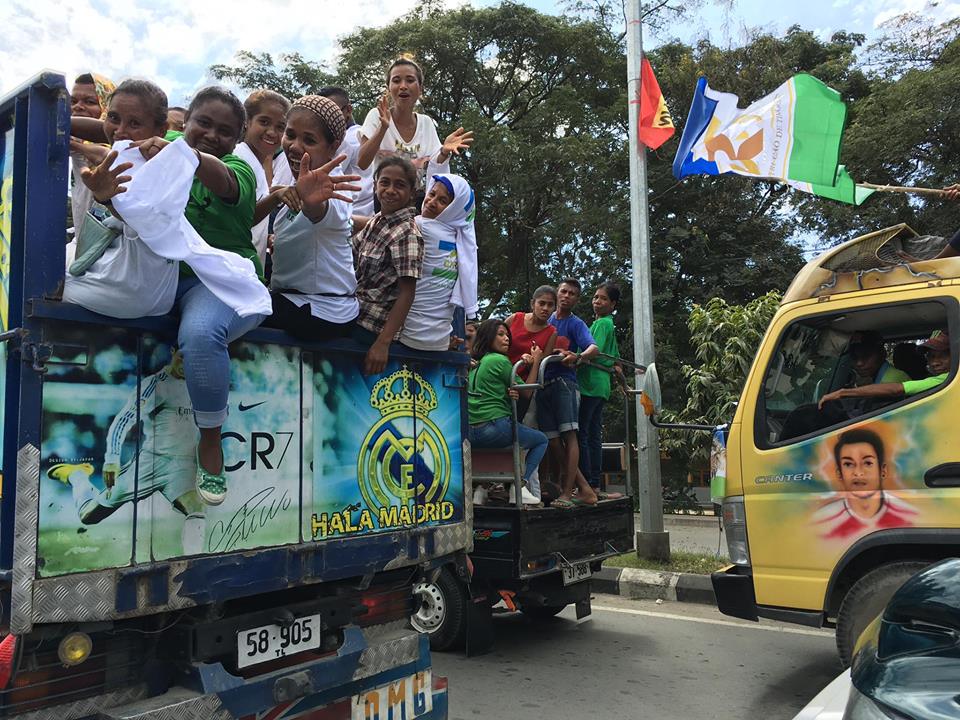
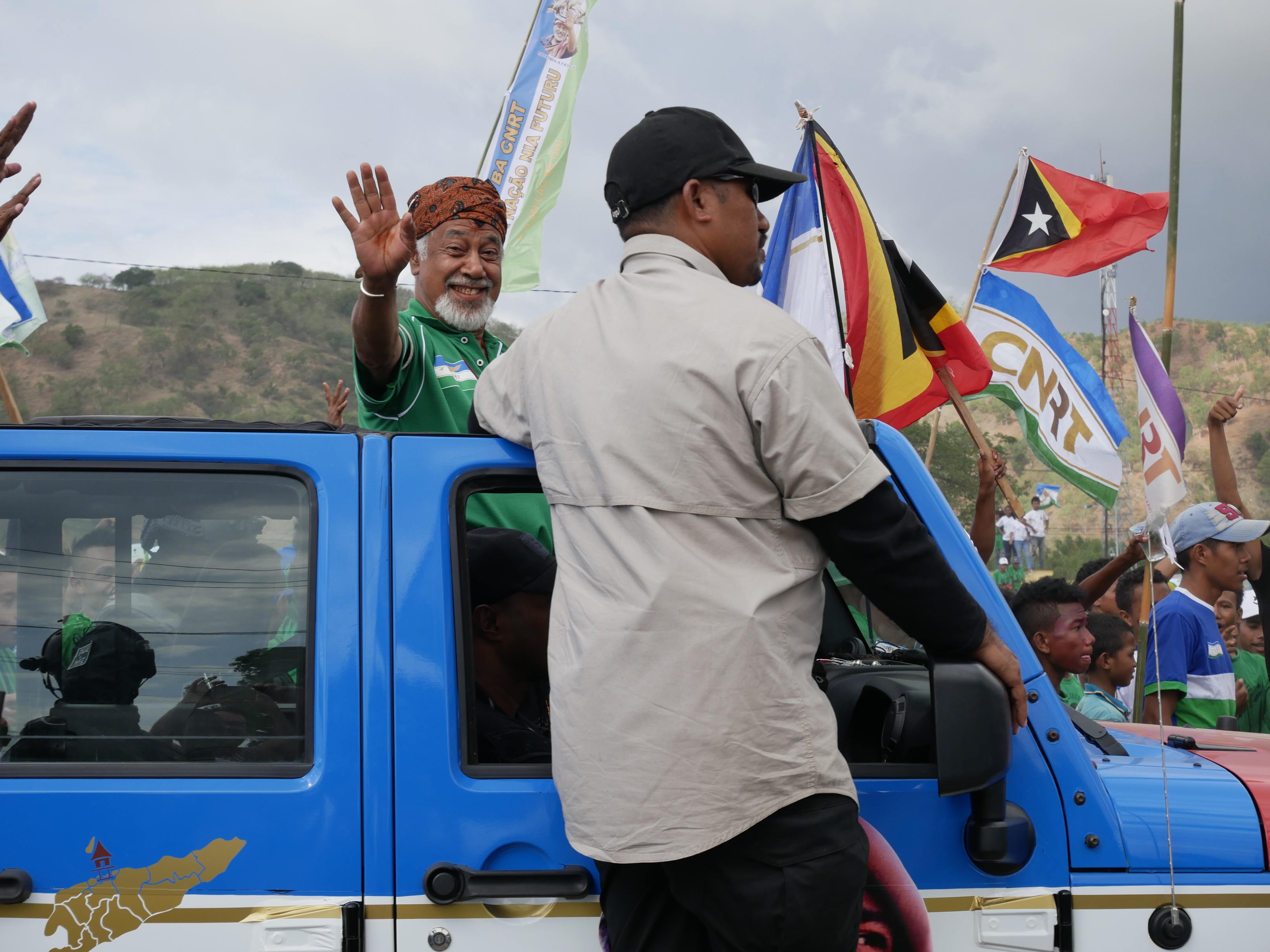
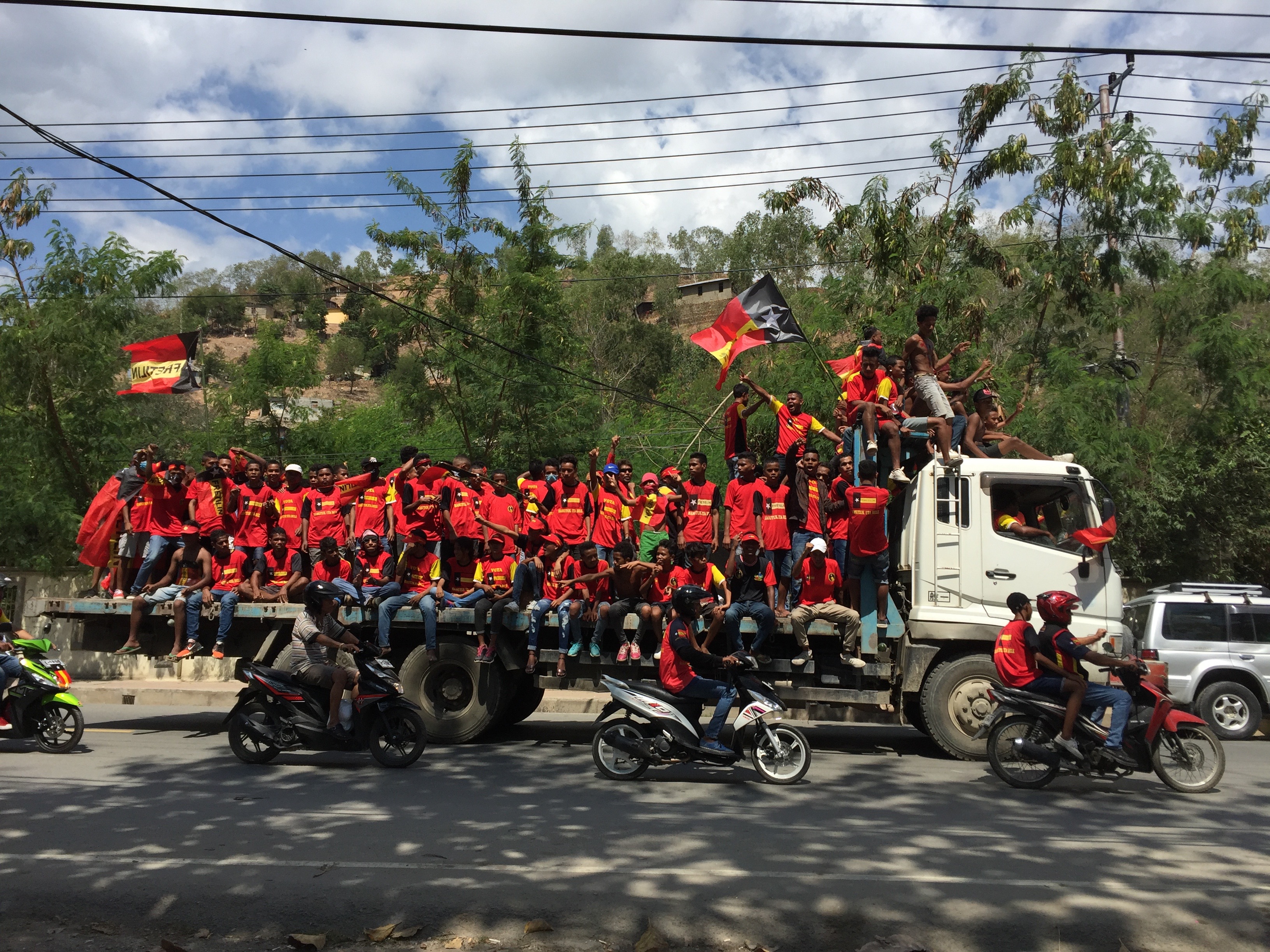
Veterans (including some female veterans) are highly respected power-brokers. Many serve as party coordinators, helping to mobilise voters (especially for the dominant CNRT and Fretilin, as well as the less-dominant PD and PLP). The leading political figures of Timor-Leste are veterans, a background several (especially Xanana Gusmão) played up in campaign paraphernalia. As, for instance, in the Philippines, local officials—particularly suco (village) and aldeia (hamlet) chiefs—also help to deliver votes, although they are officially nonpartisan.
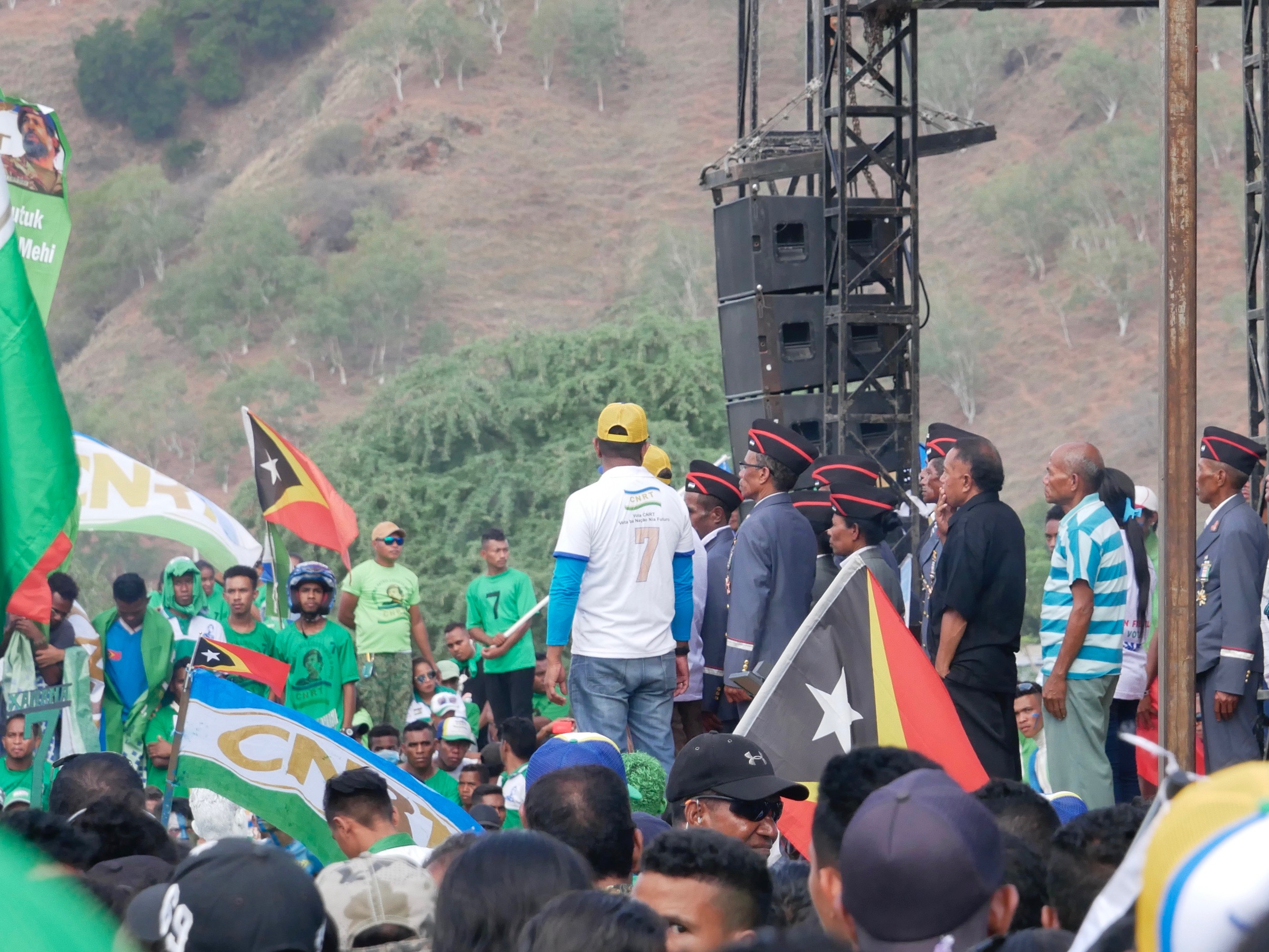
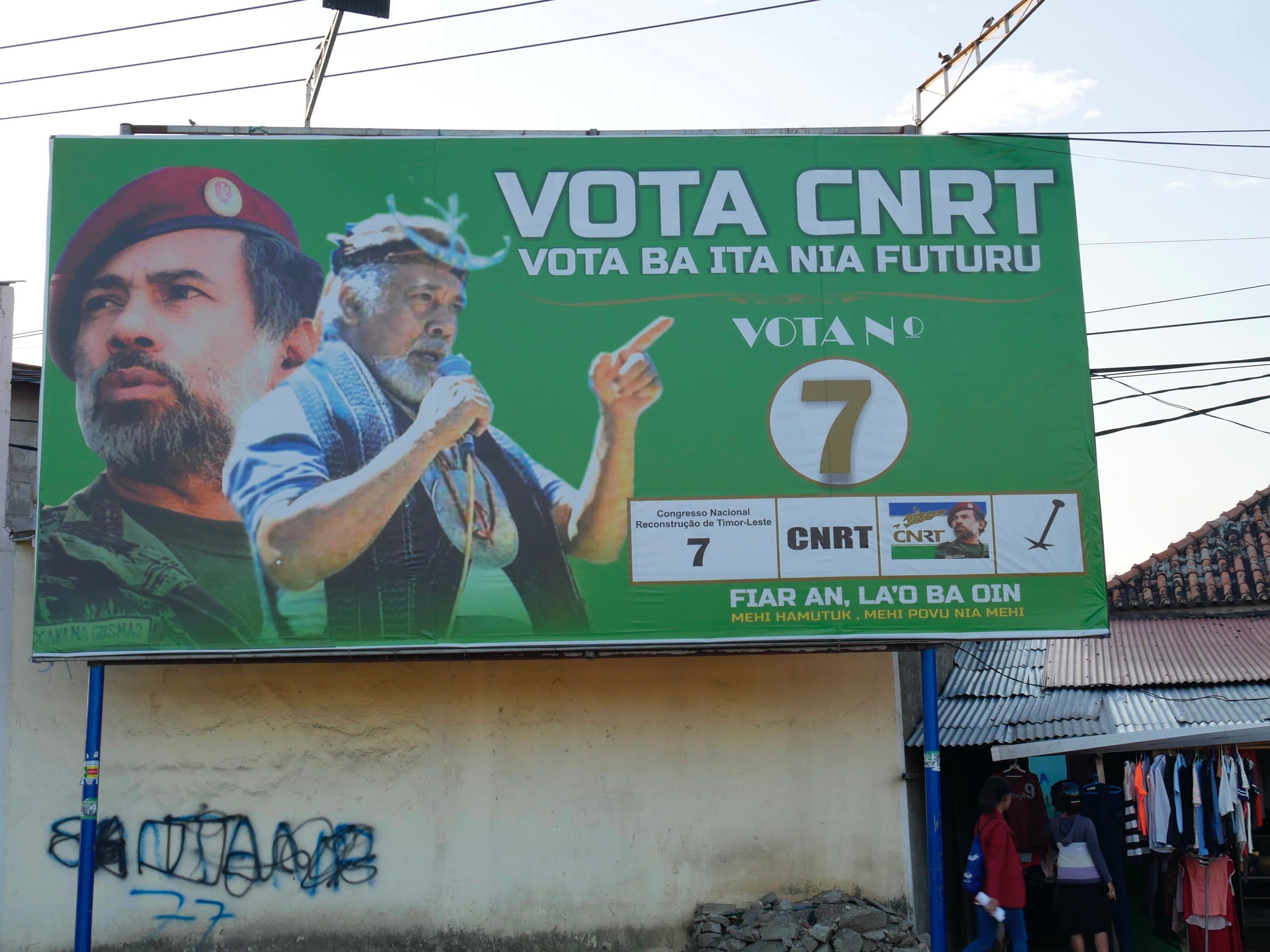
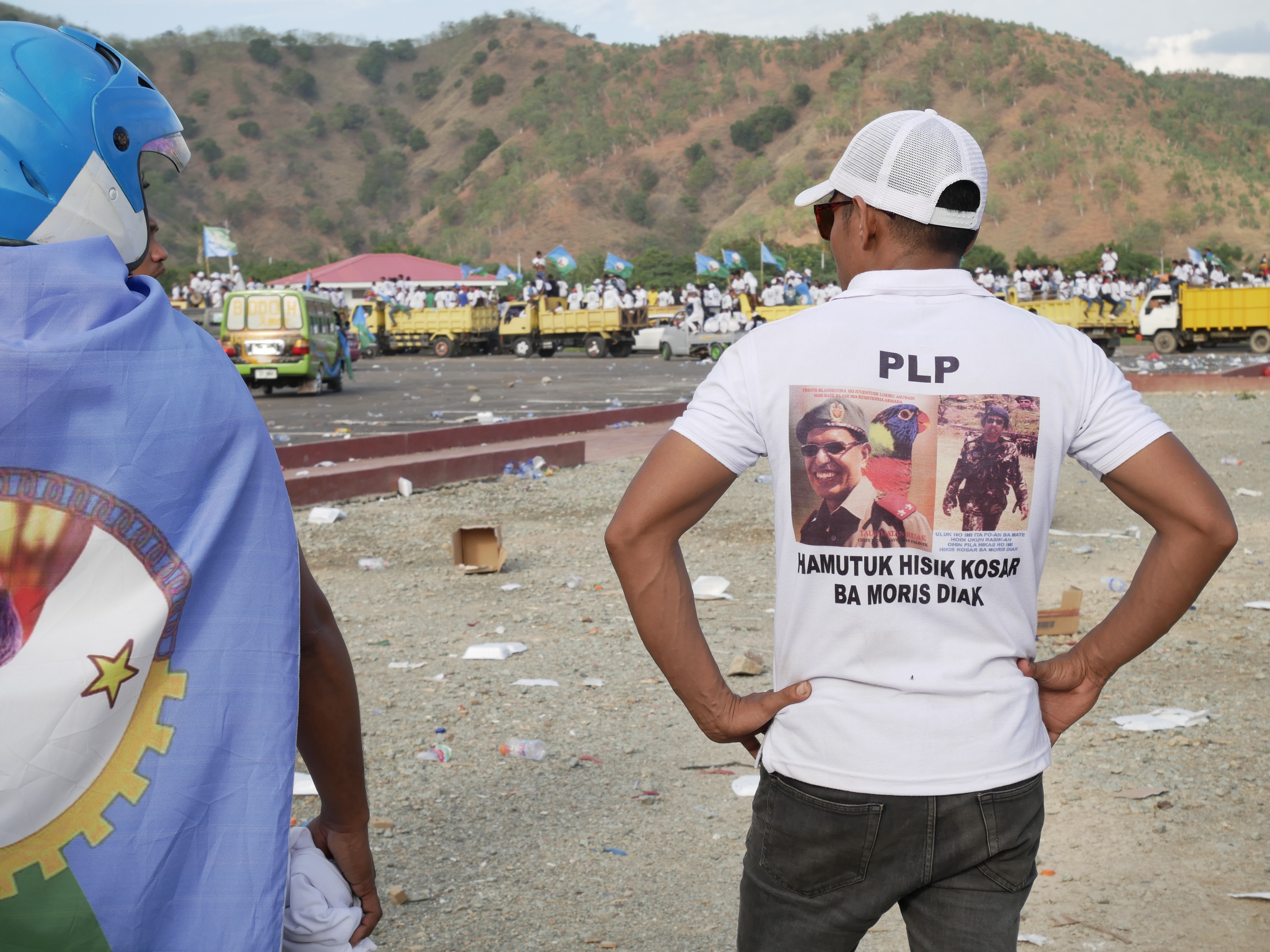

With a single national district and voting by closed list proportional representation, campaigns center around the party and its leader, not other candidates. That said, candidates are expected to draw votes, especially in their home districts, and parties construct their lists with an eye not only to party position, but also geography. Some parties, most notably Fretilin, stressed a policy platform, highlighting issues such as infrastructure, poverty eradication, education, health care, and veterans’ benefits. Parties have a mass membership base; card carrying members are termed militantes. Loyalties run deep, often stretching back to the period of occupation and resistance or even before, but plenty of voters do switch parties, including from among those with a declared commitment to one.
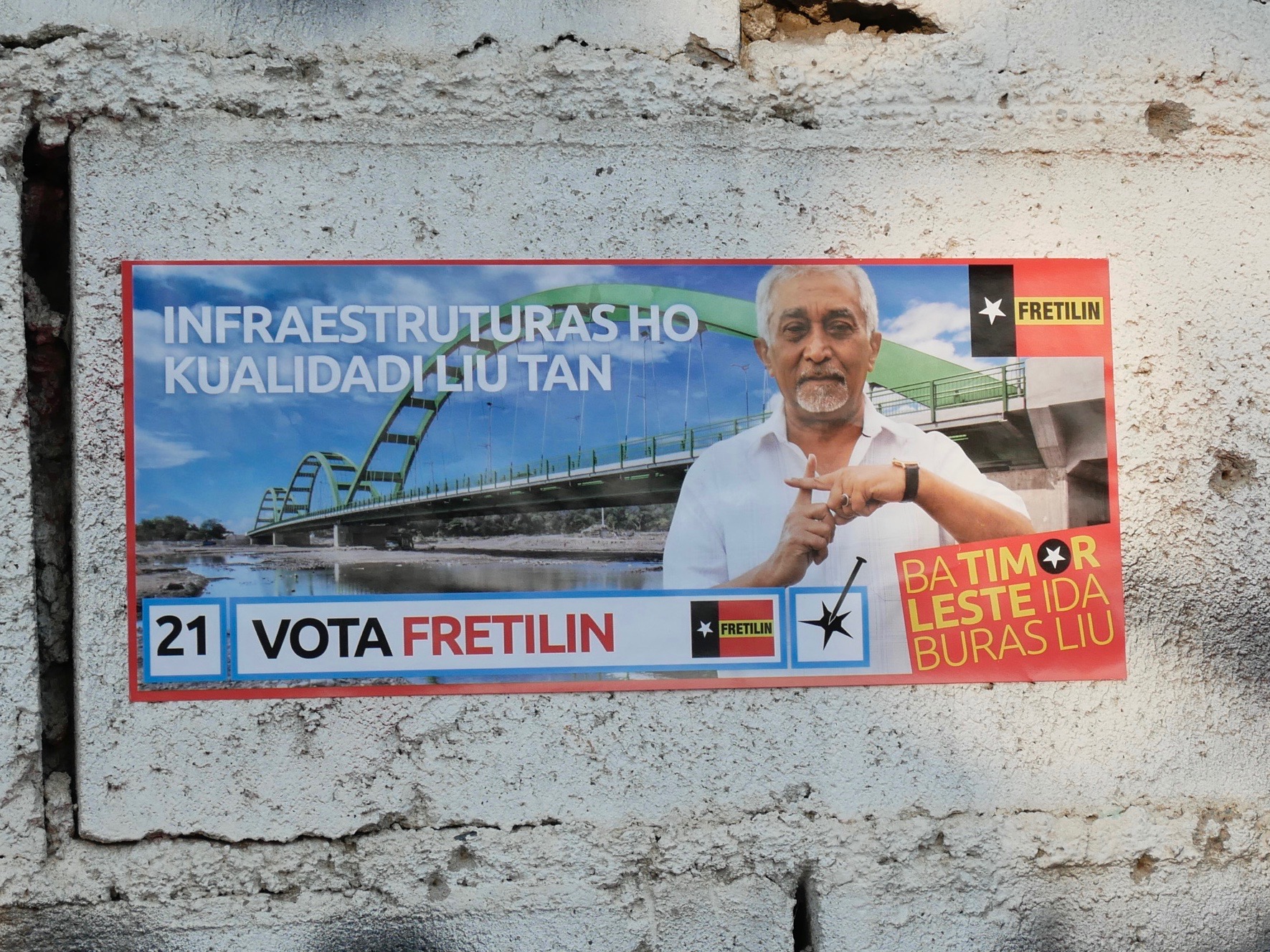
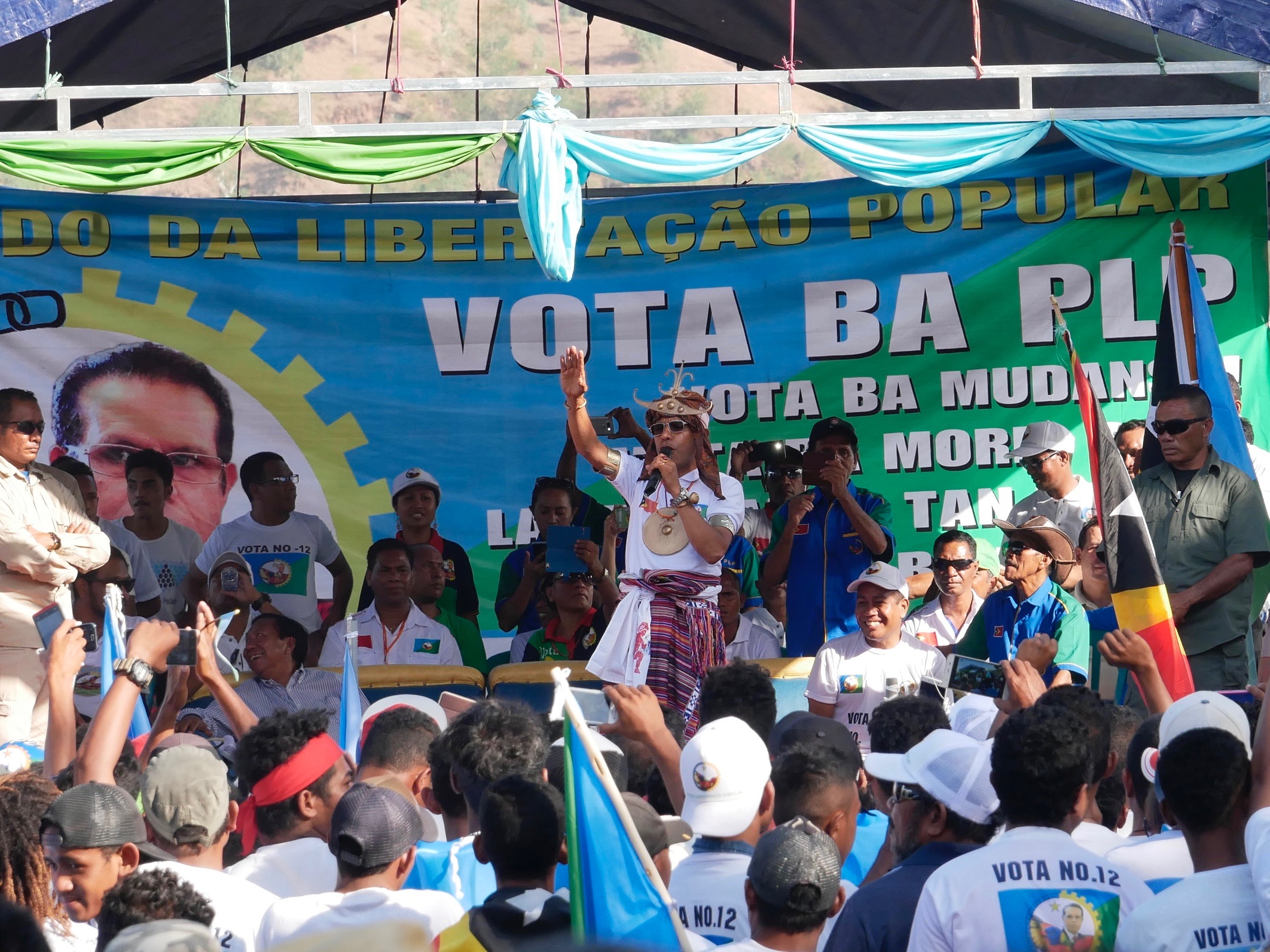
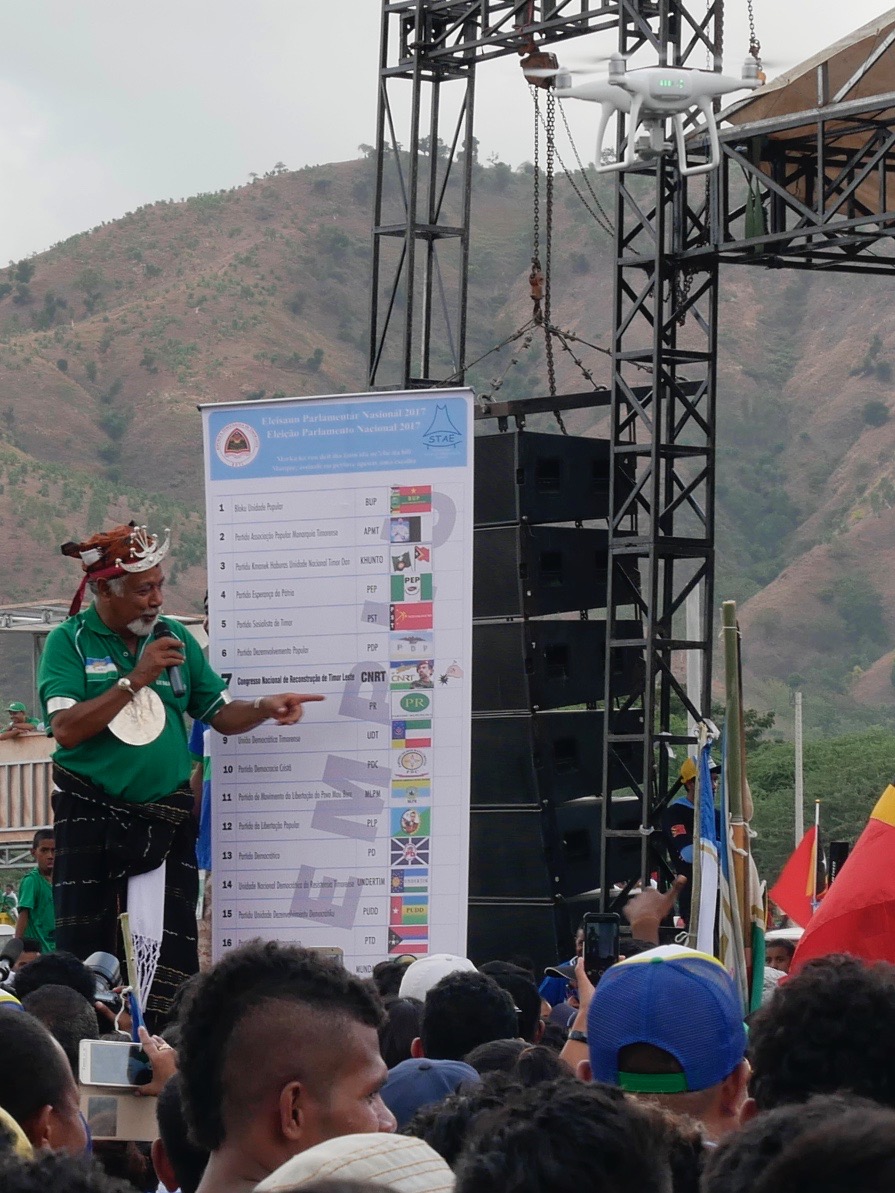
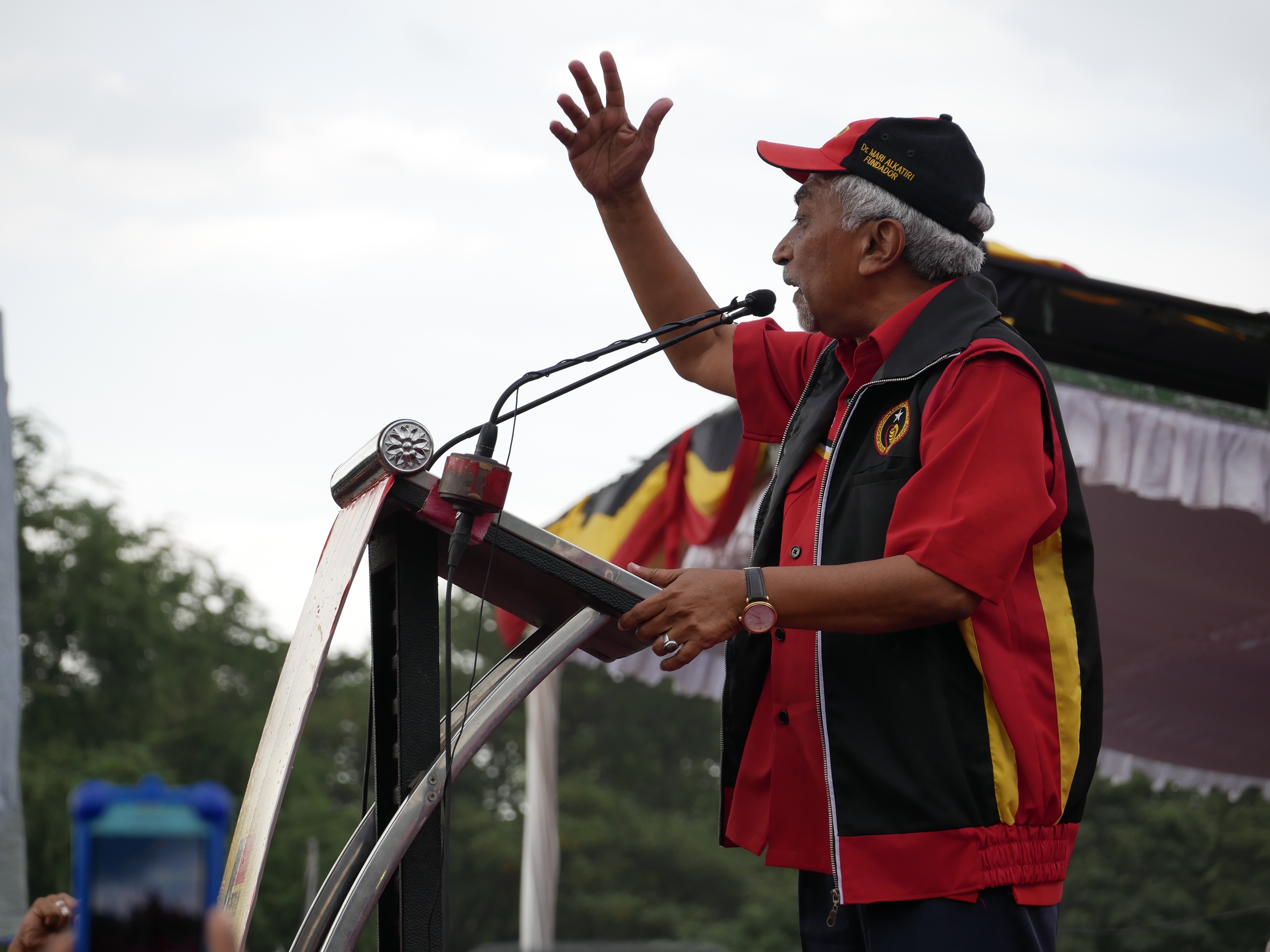
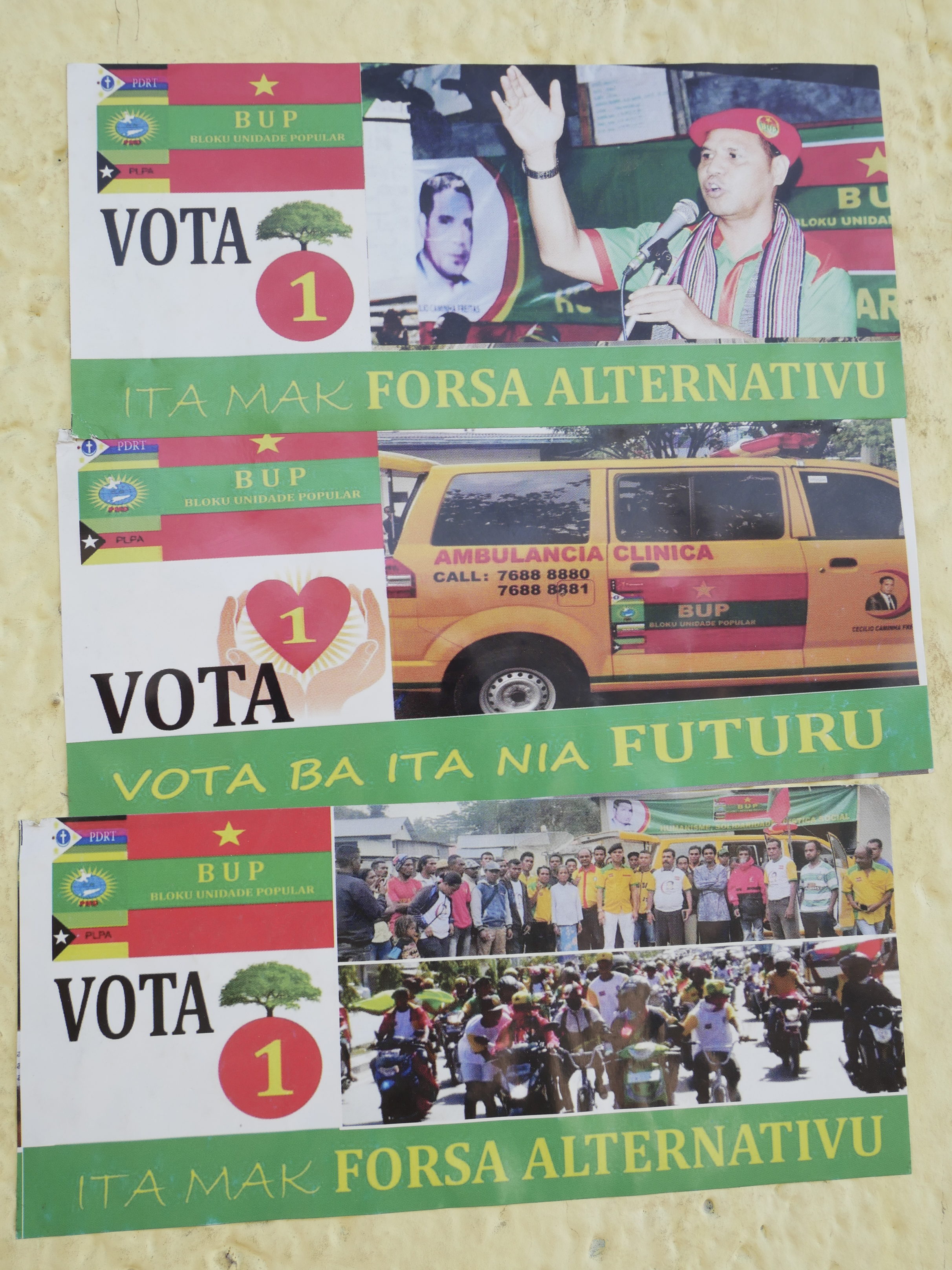 The violence of the past cast a shadow on the election, but the campaign itself was a largely peaceful affair, thanks to an agreement between the leading parties, as well as what seemed a general preference not to revert to those days. Local conflict prevention NGO Belun reported 28 minor incidents in the days before the election, but no deaths. We noted a strong emphasis on peace and stability, across parties, but especially in CNRT, which made this its signature theme. That said, police and other security personnel were thick on the ground for the big rallies, including an extraordinary number of police from various divisions, armed with a range of weaponry, directing traffic.
The violence of the past cast a shadow on the election, but the campaign itself was a largely peaceful affair, thanks to an agreement between the leading parties, as well as what seemed a general preference not to revert to those days. Local conflict prevention NGO Belun reported 28 minor incidents in the days before the election, but no deaths. We noted a strong emphasis on peace and stability, across parties, but especially in CNRT, which made this its signature theme. That said, police and other security personnel were thick on the ground for the big rallies, including an extraordinary number of police from various divisions, armed with a range of weaponry, directing traffic.
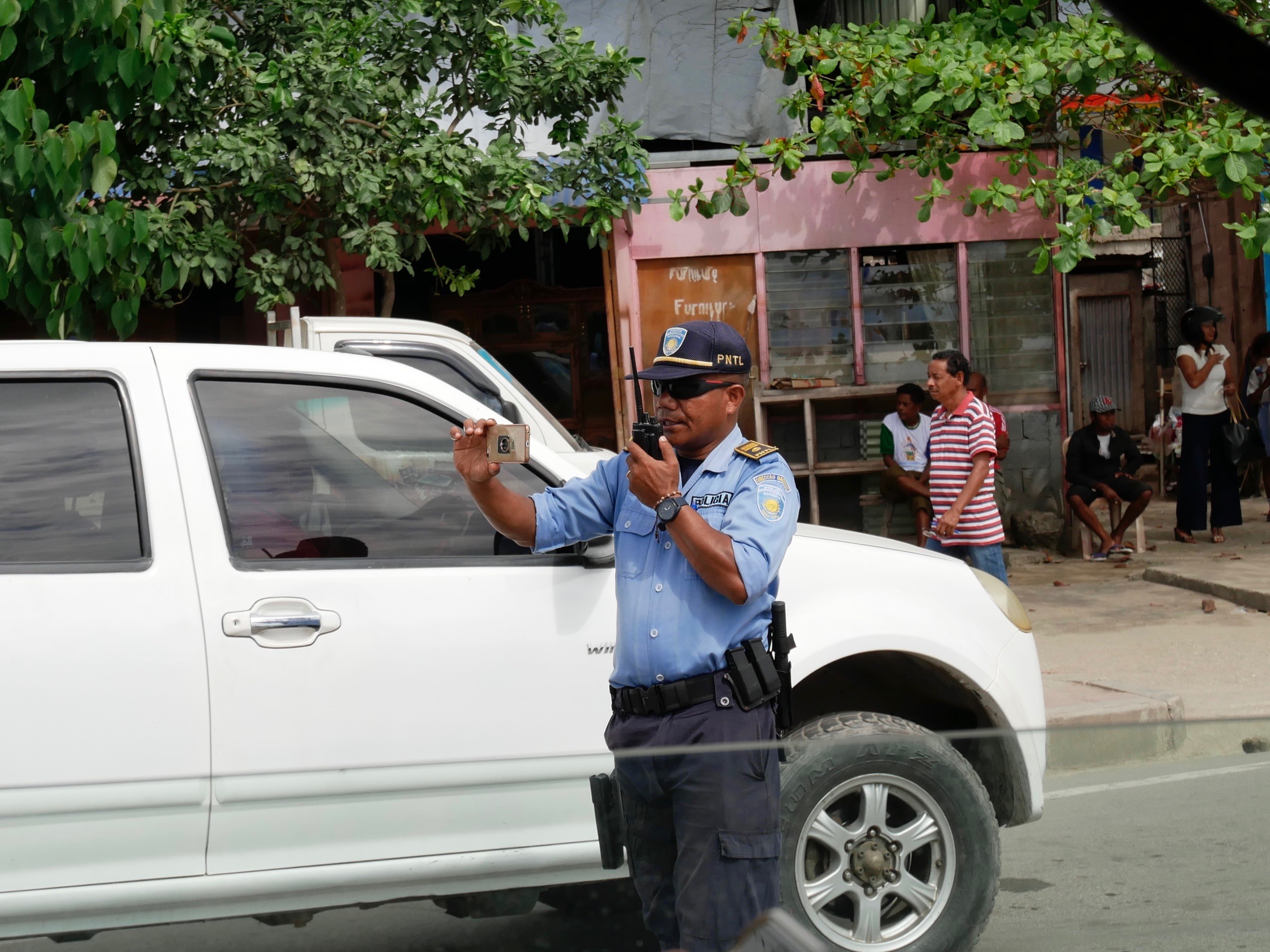
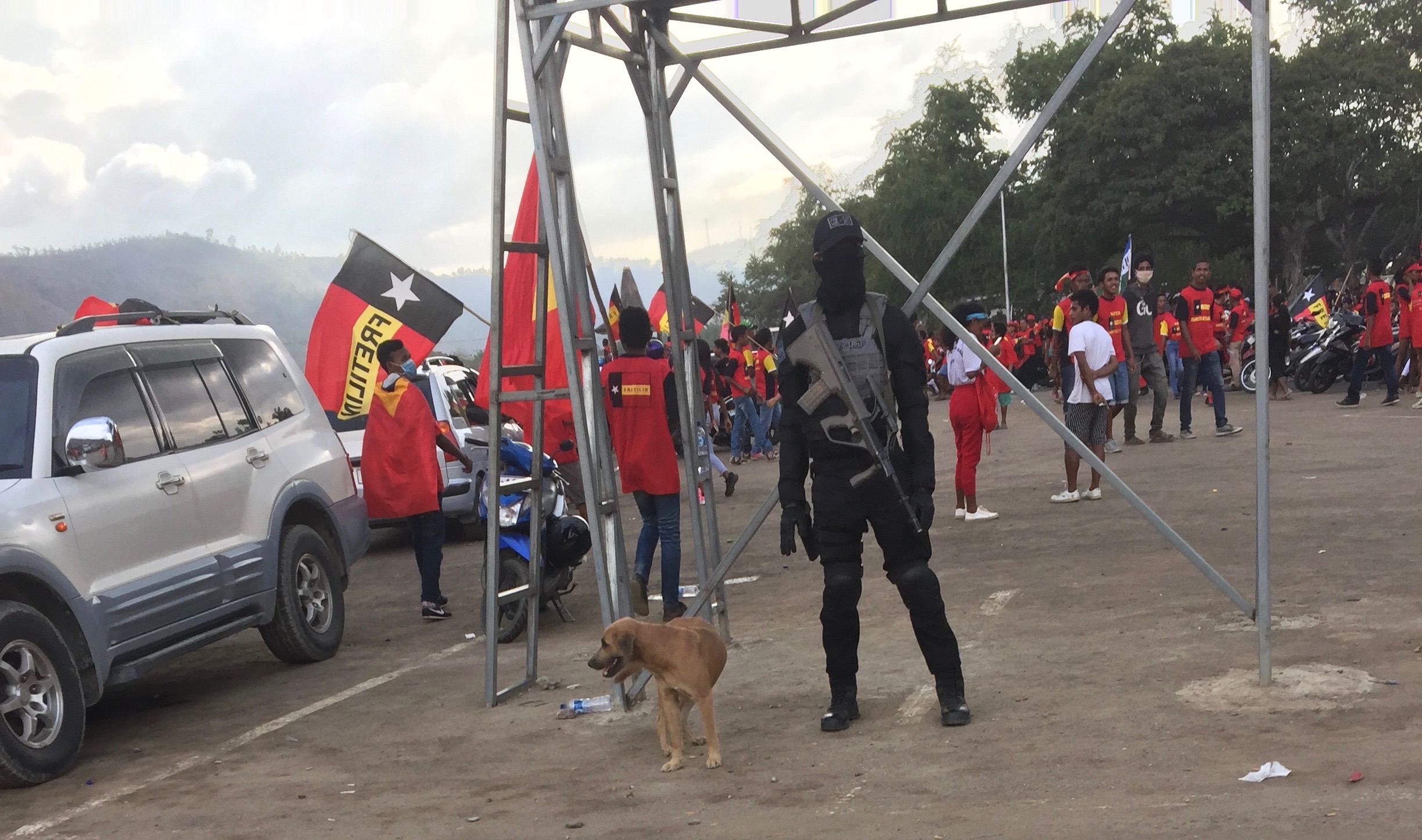
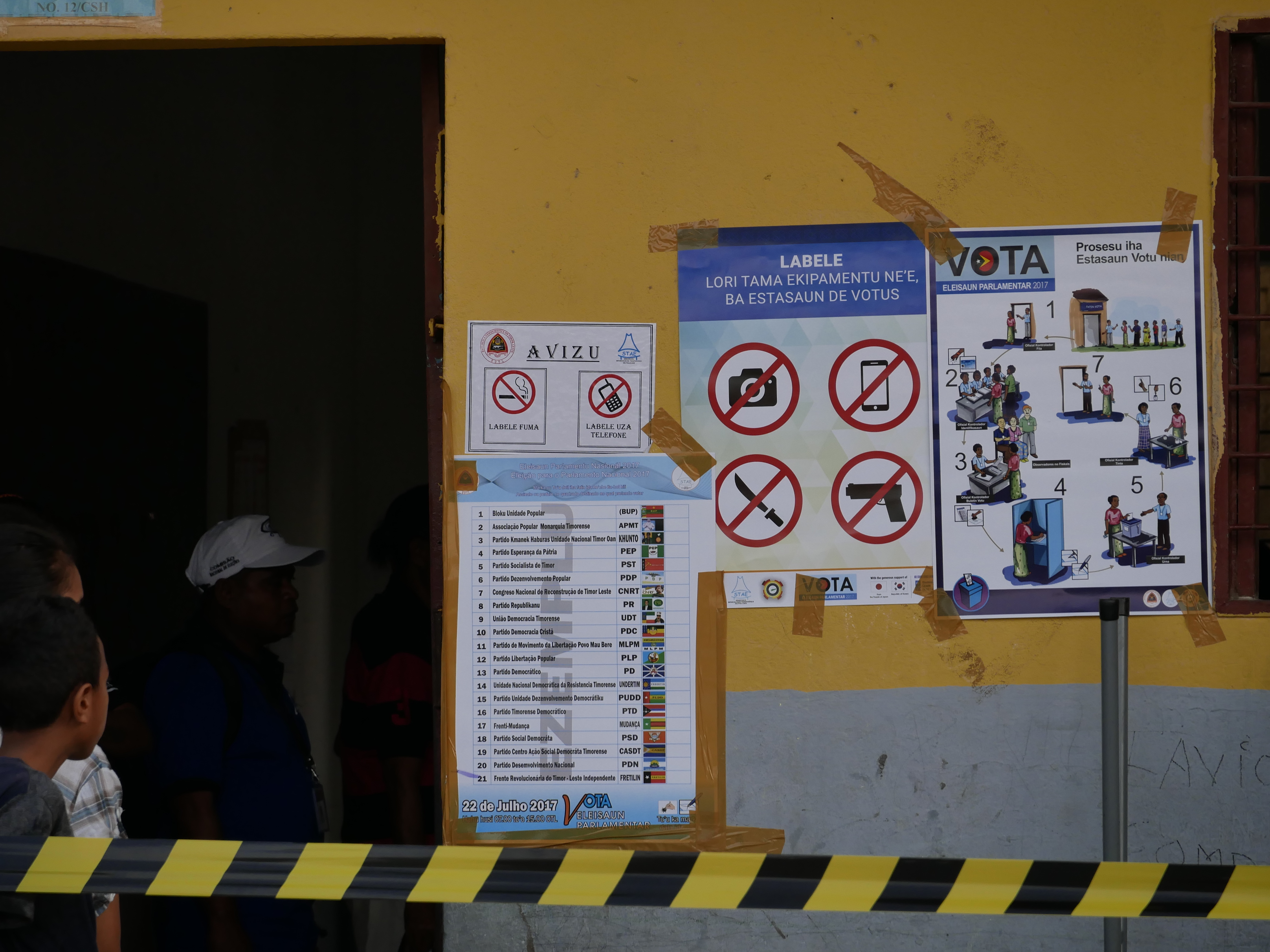
Although some rumours of cash distribution circulated, we found little evidence of vote buying. What was apparent in abundance was party swag: flags, visors, and above all, T-shirts. CNRT, for example, distributed over 100,000 T-shirts in Dili alone, including 65,000 just in the few days before their final rally. However, parties’ pledges and performance in delivering “programs” (local public goods such as roads, or government benefits such as pensions) were a common concern. For example, one suco chief contemplated switching from CNRT at the eleventh hour, bringing a bloc of voters with him, because CNRT had not fulfilled its promises to him to help refurbish the local suco office. Parties also try to win over community leaders by canvassing their priorities and offering deals—though officials from across parties noted, too, that they hesitated to make promises they might not be able to keep.
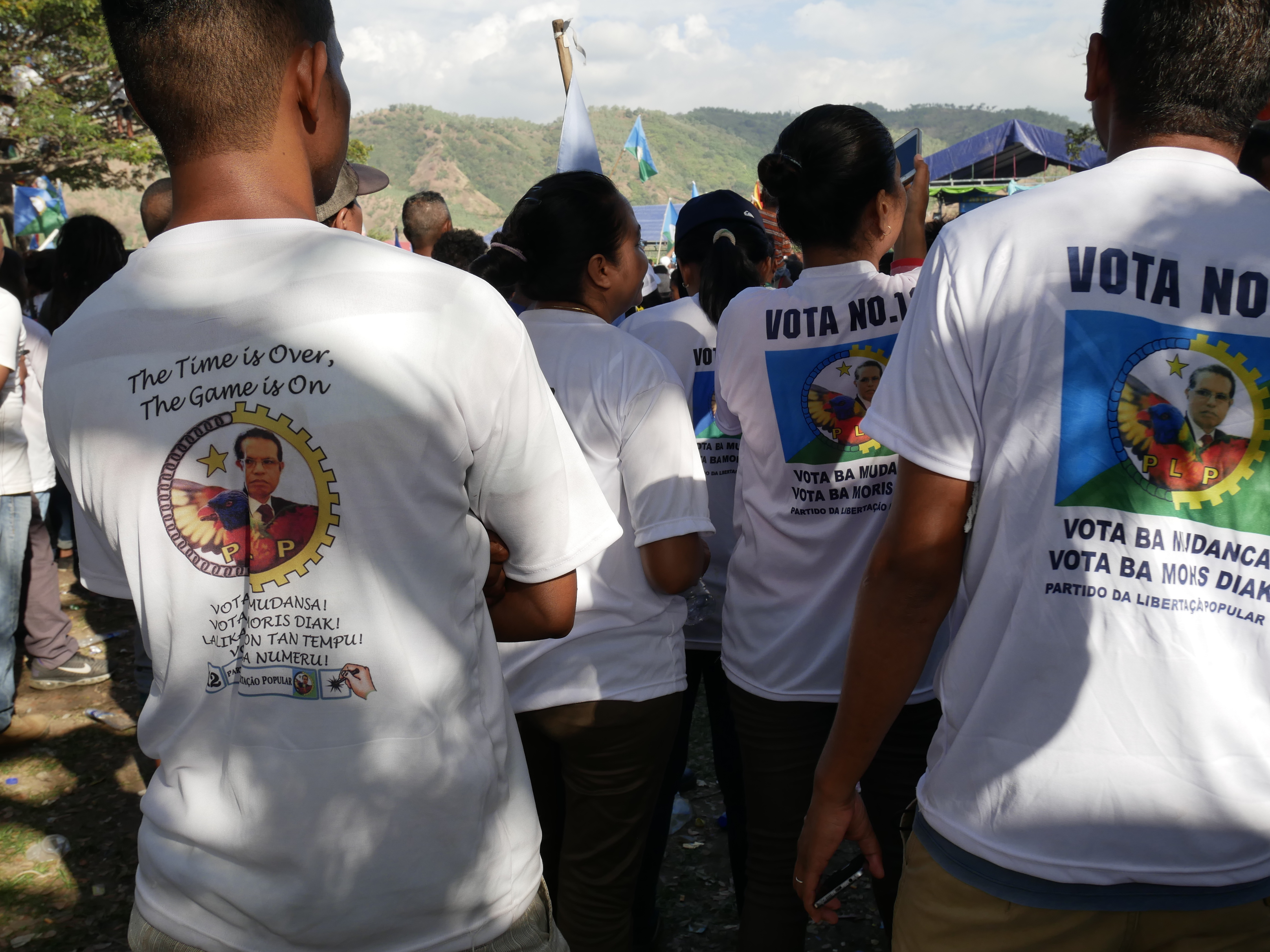
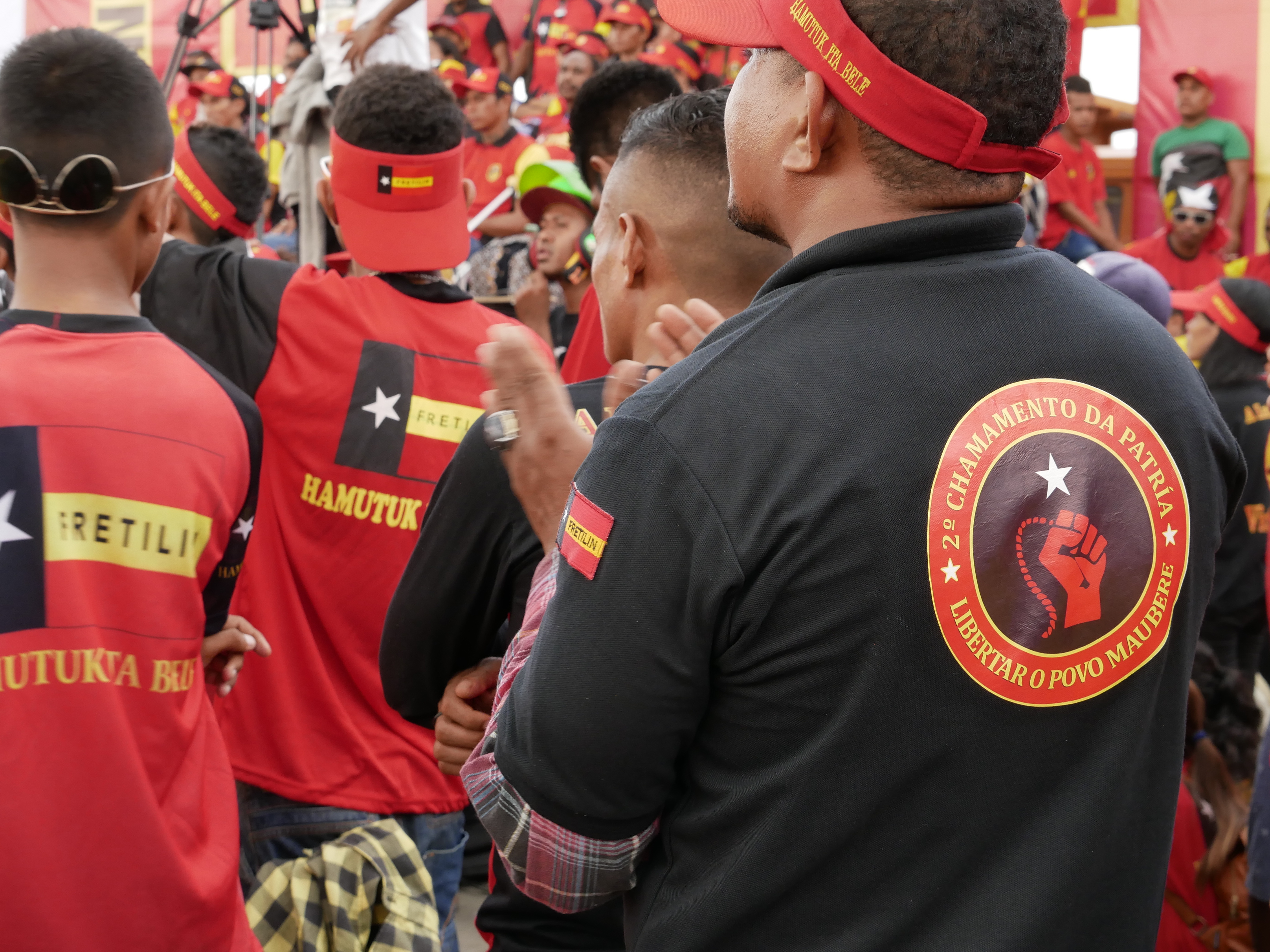
The authorities ran an impressive election, from their get-out-the-vote campaign to polling day. Voting was remarkably orderly, from what we could see. Rules such as the ban on cellphones were observed strictly at the polling stations we visited. Moreover, observers, both international and domestic, outnumbered voters in some polling places—these elections were very well watched, with coverage apparently at every one of the 843 polling stations. In addition, all parties were entitled to have five observers at every polling station (albeit with only one per party allowed inside at a time); if all parties had been able to fulfil their allotment, over one quarter of the electorate could have been roped into the poll watching effort.
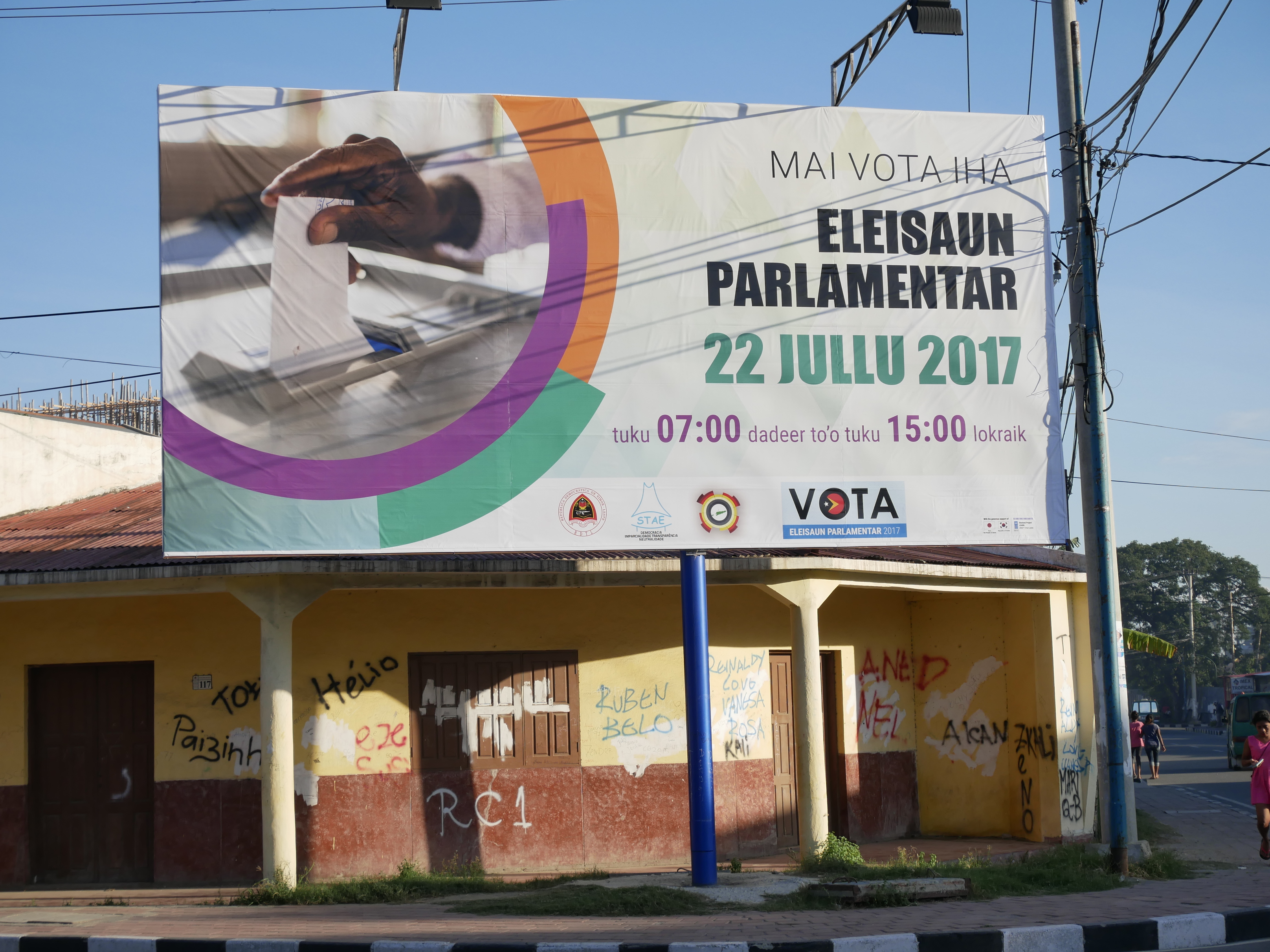
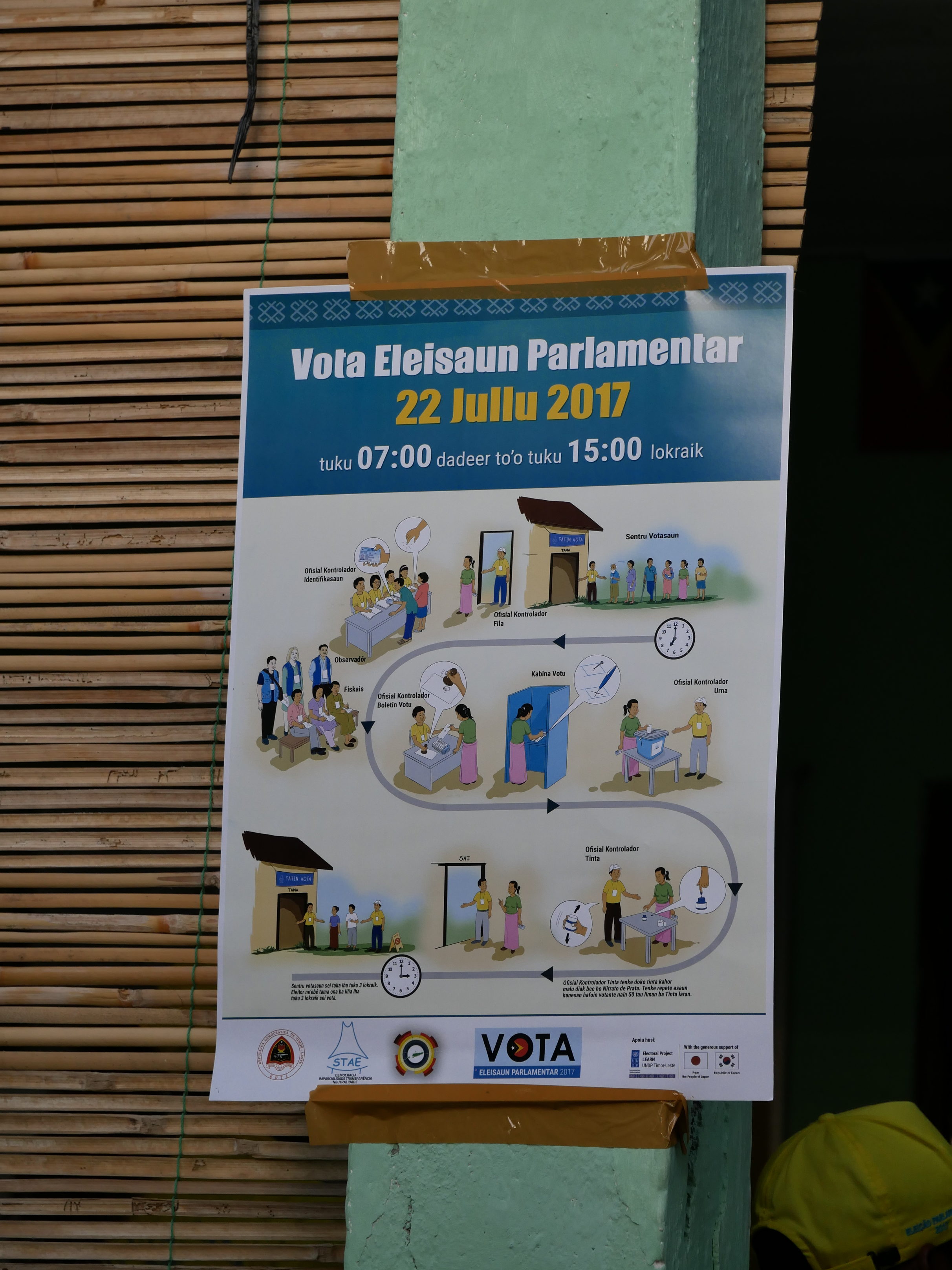
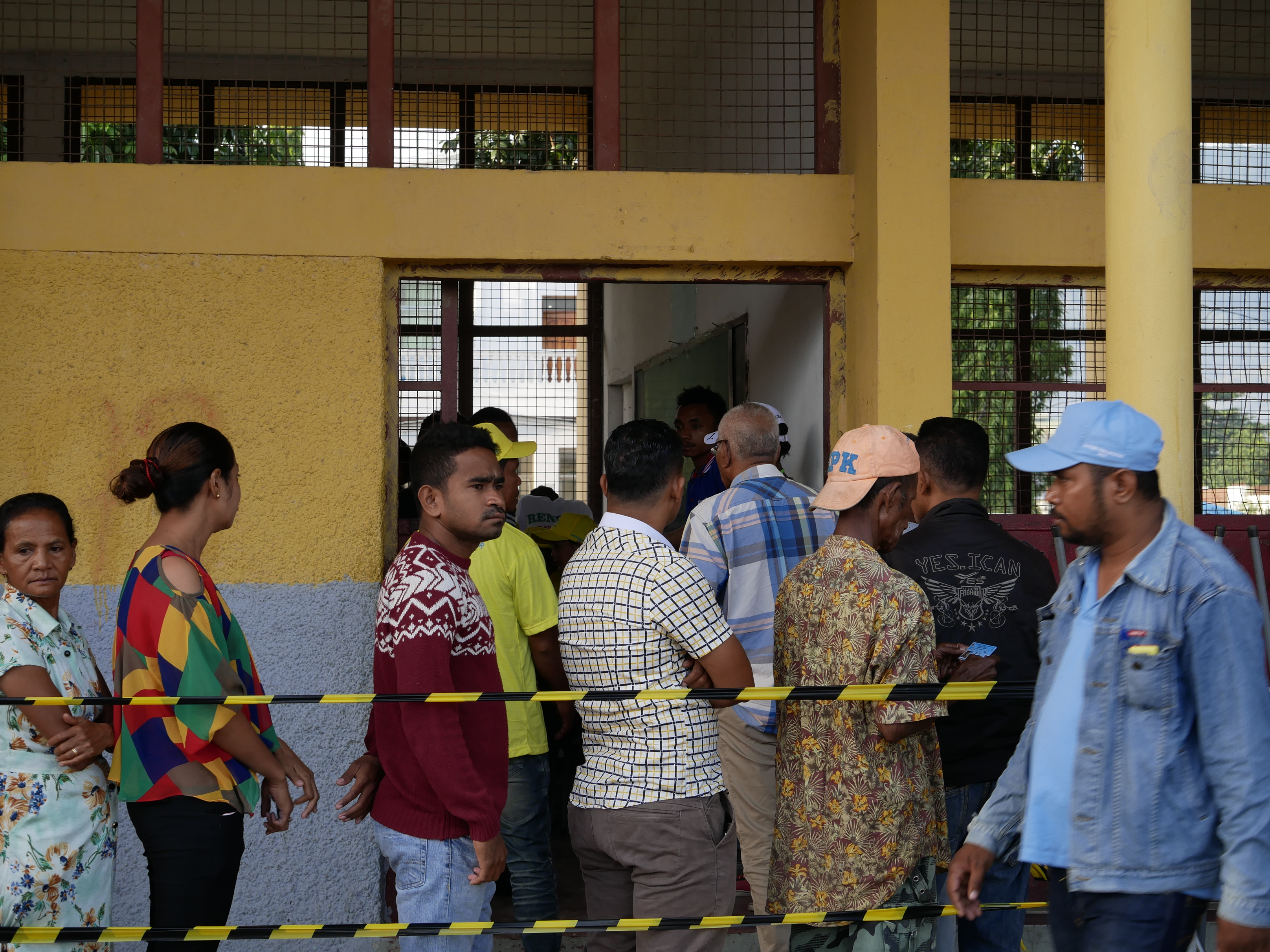
Timor-Leste is known for having the highest level of representation of women in parliament in the region—38% in the last parliament—primarily due to its 30% quota for female candidates. This requirement is implemented currently via a ‘zipper’ system: every third name on each party’s candidate list must be female. Though some parties have prominent women leaders, women remain underrepresented among local level officials such as suco chiefs and party officials. For men, positions such as district coordinator are natural pathways to political office. But parties seem to be making efforts to involve more women, beyond simply meeting with women’s groups. Fretilin especially made an effort to offer gender inclusive imagery in its signage. Moreover, the election authorities’ get-out-the-vote billboards featured prominently not just women and voters of different ages, but voters with disabilities—definitely not the norm in the region.
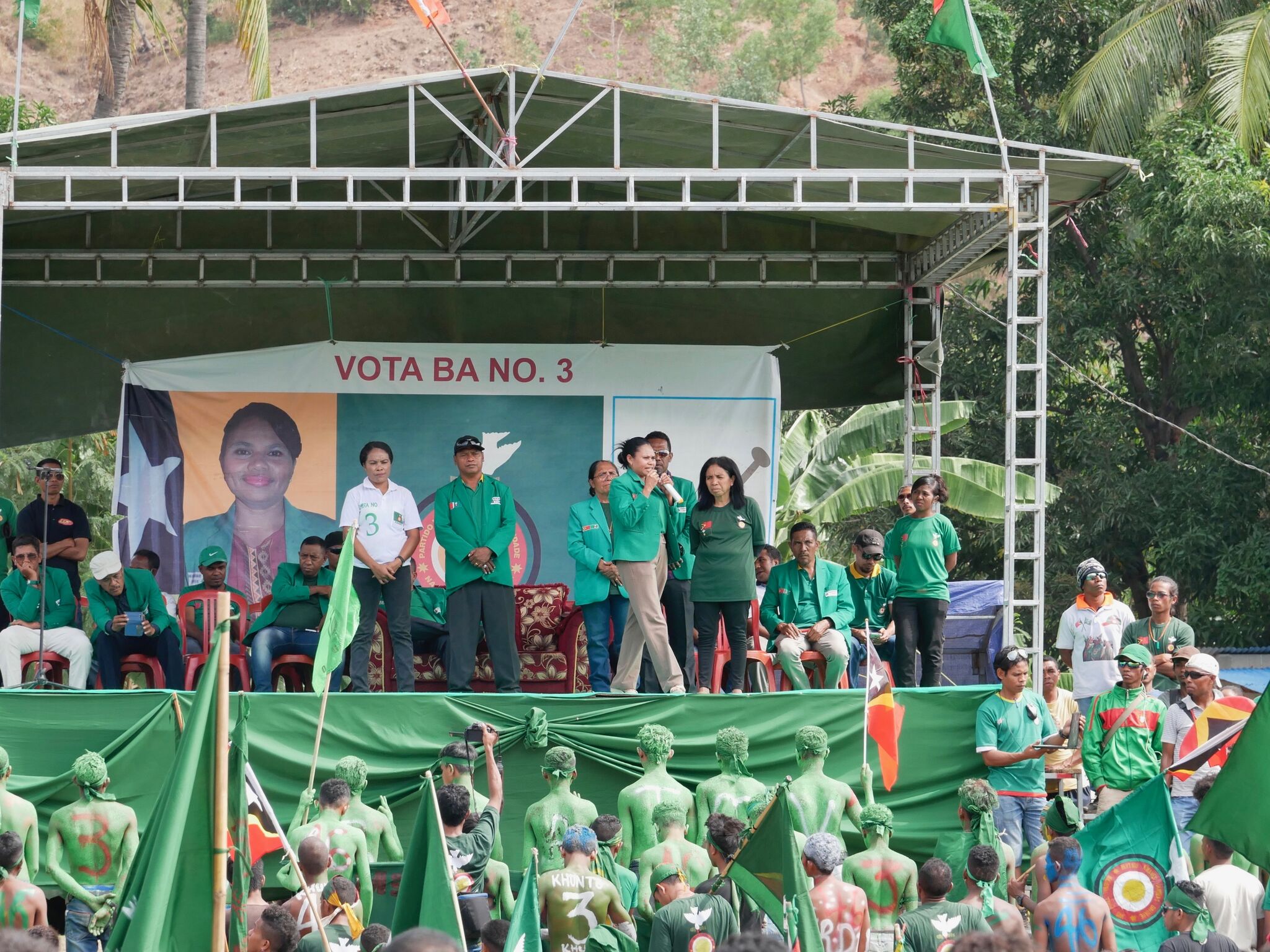
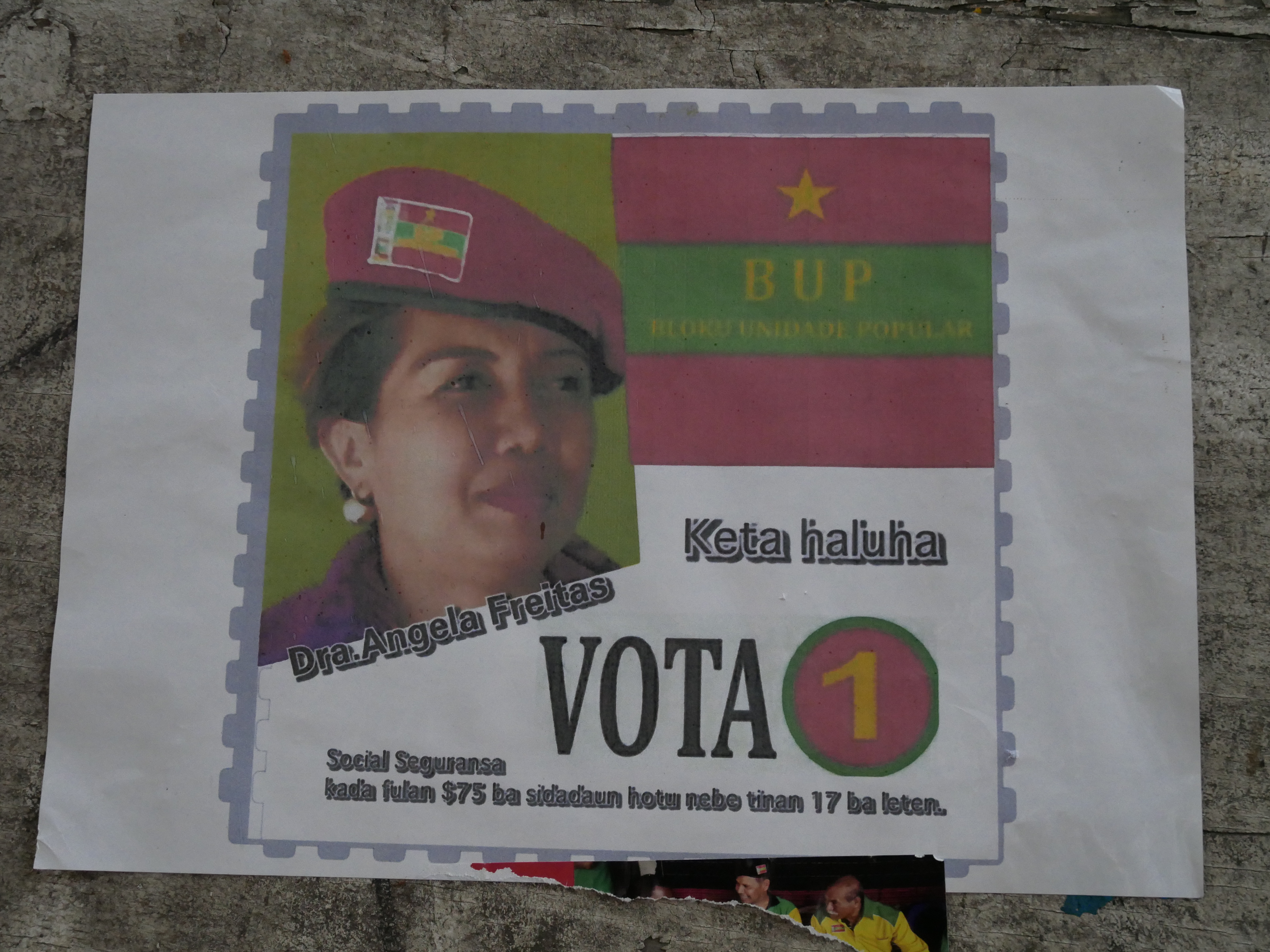
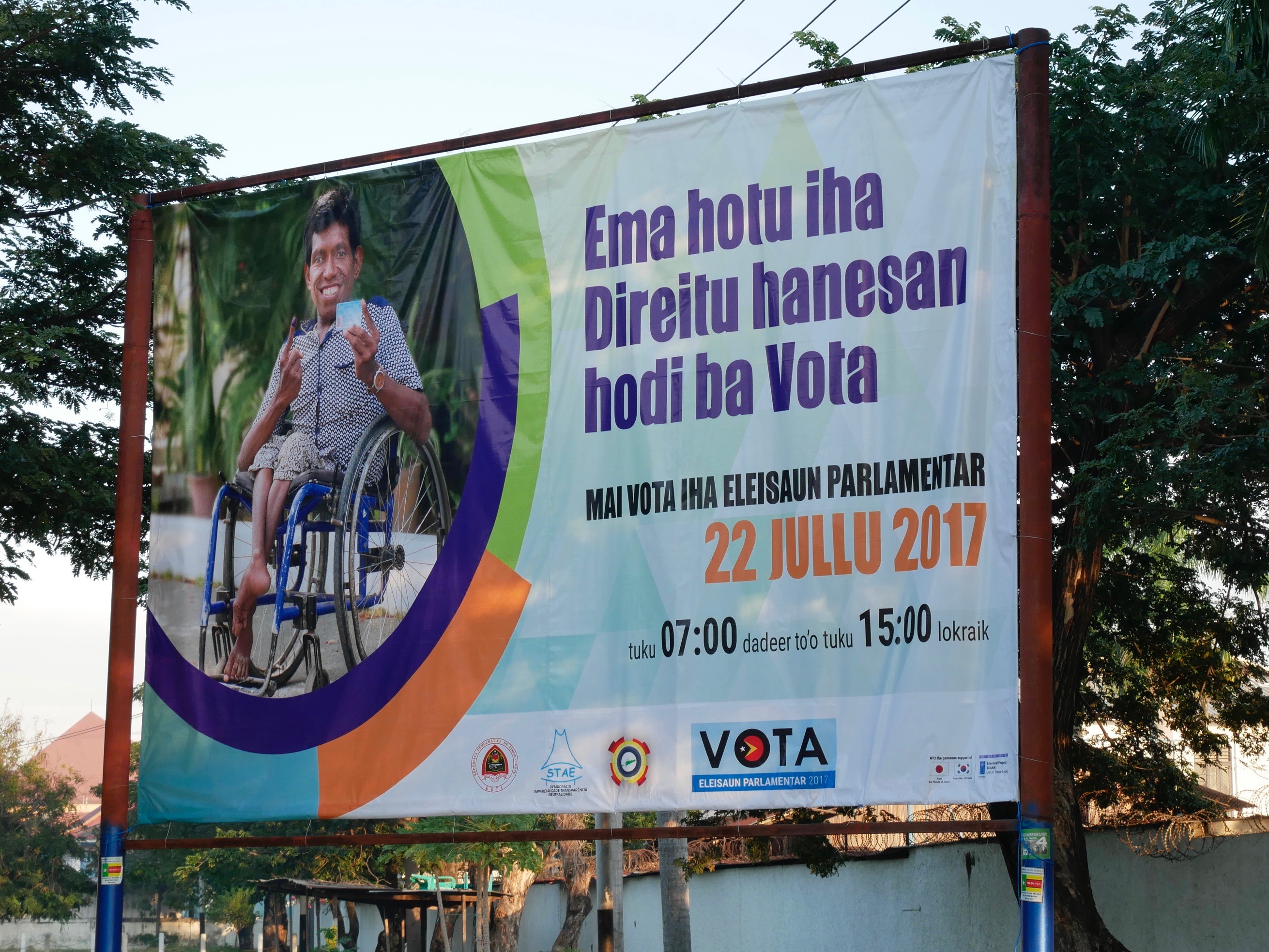
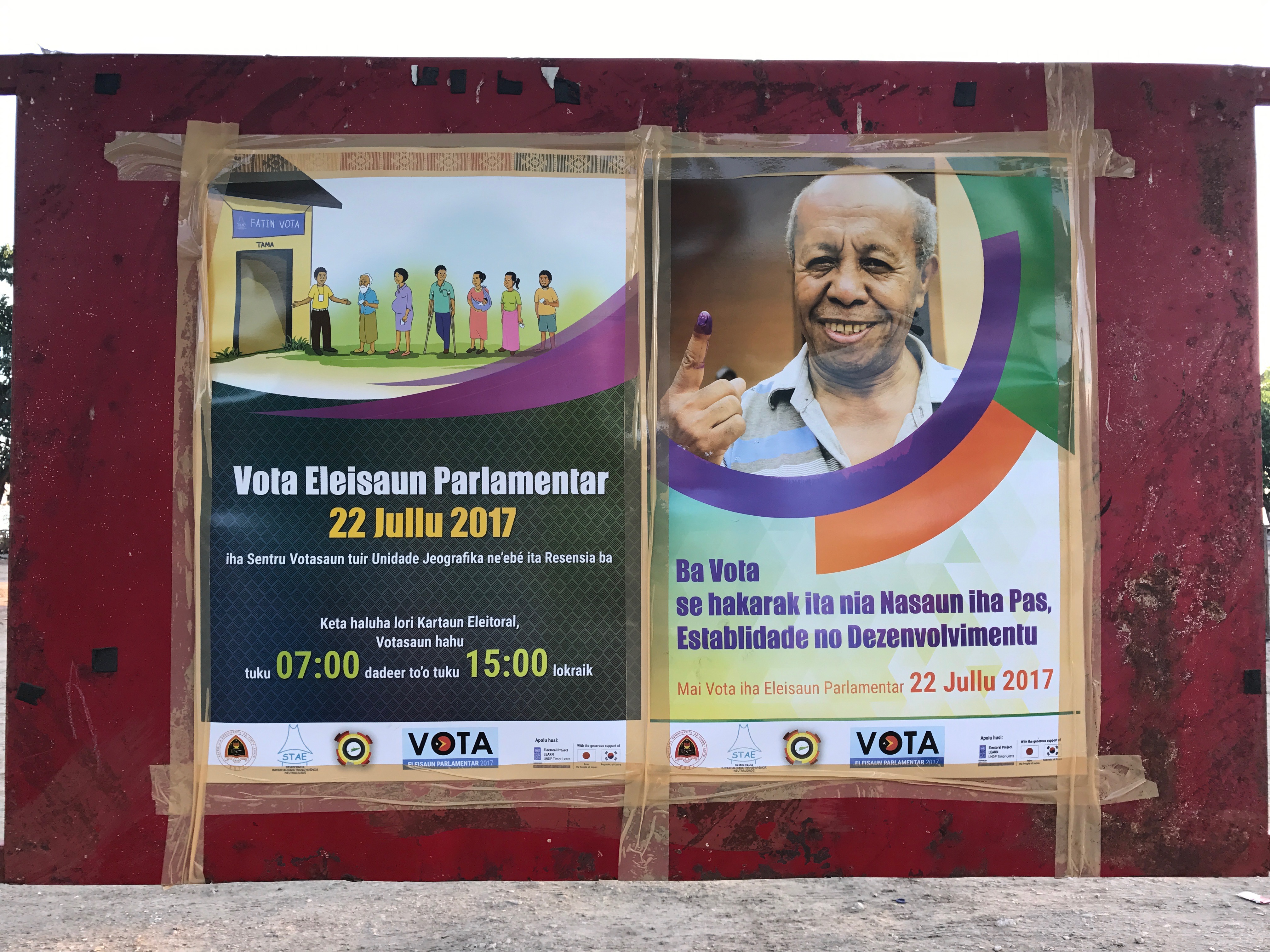
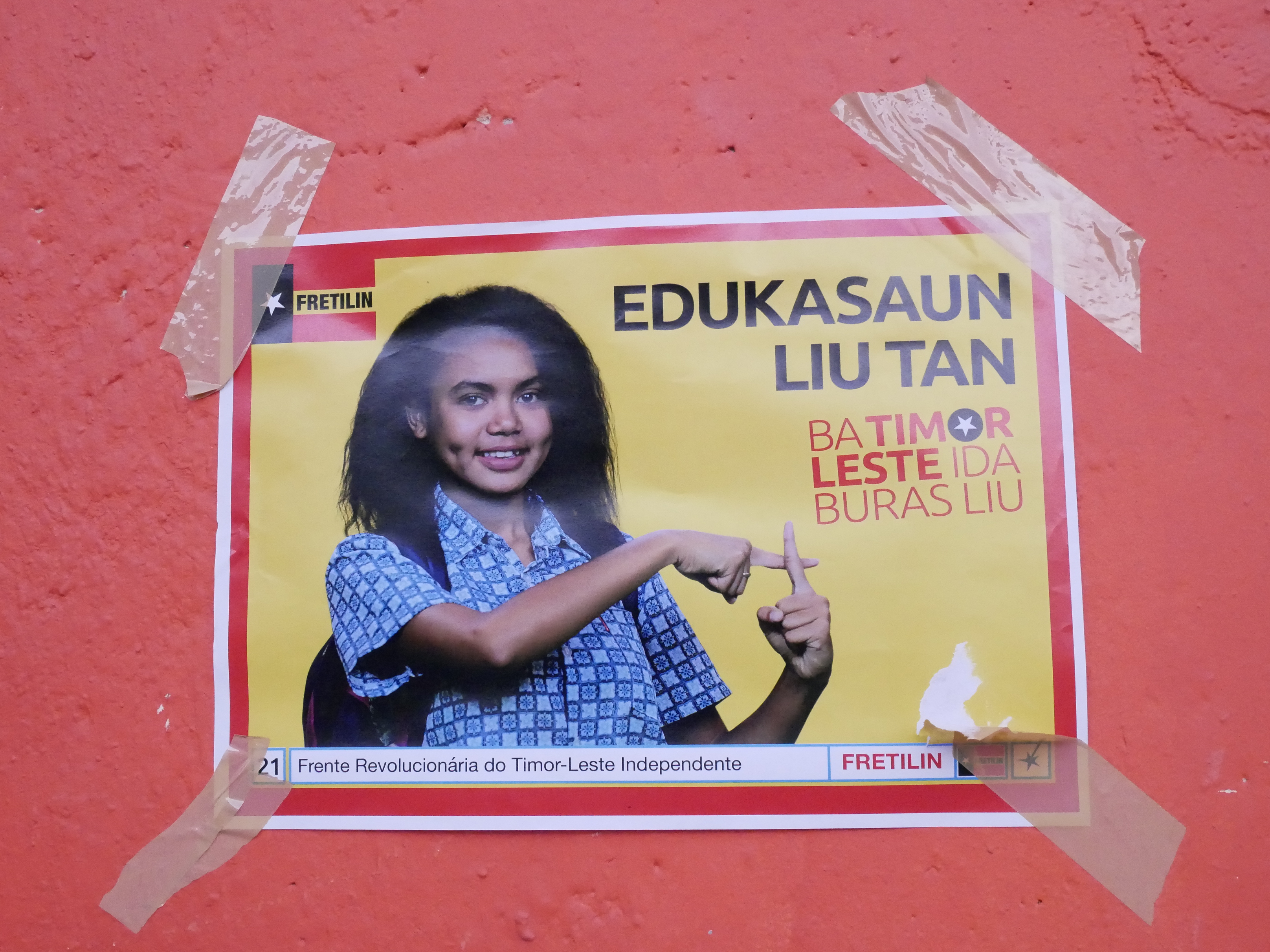
The system is clearly structured around parties, yet most parties lack real substance or structure. The exception is Fretilin, which has a dense organisational network, relying heavily on its reputation as the party that declared East Timor’s independence and led the struggle against Indonesia. CNRT also has significant support among former veterans and other local notables, but it is much more loosely organised; Xanana Gusmão is the party’s primary asset and centre of power. Longstanding loyalties are the norm, but splits even within families are increasingly common and older voters (i.e. those who experienced the resistance) are more likely to be loyal.
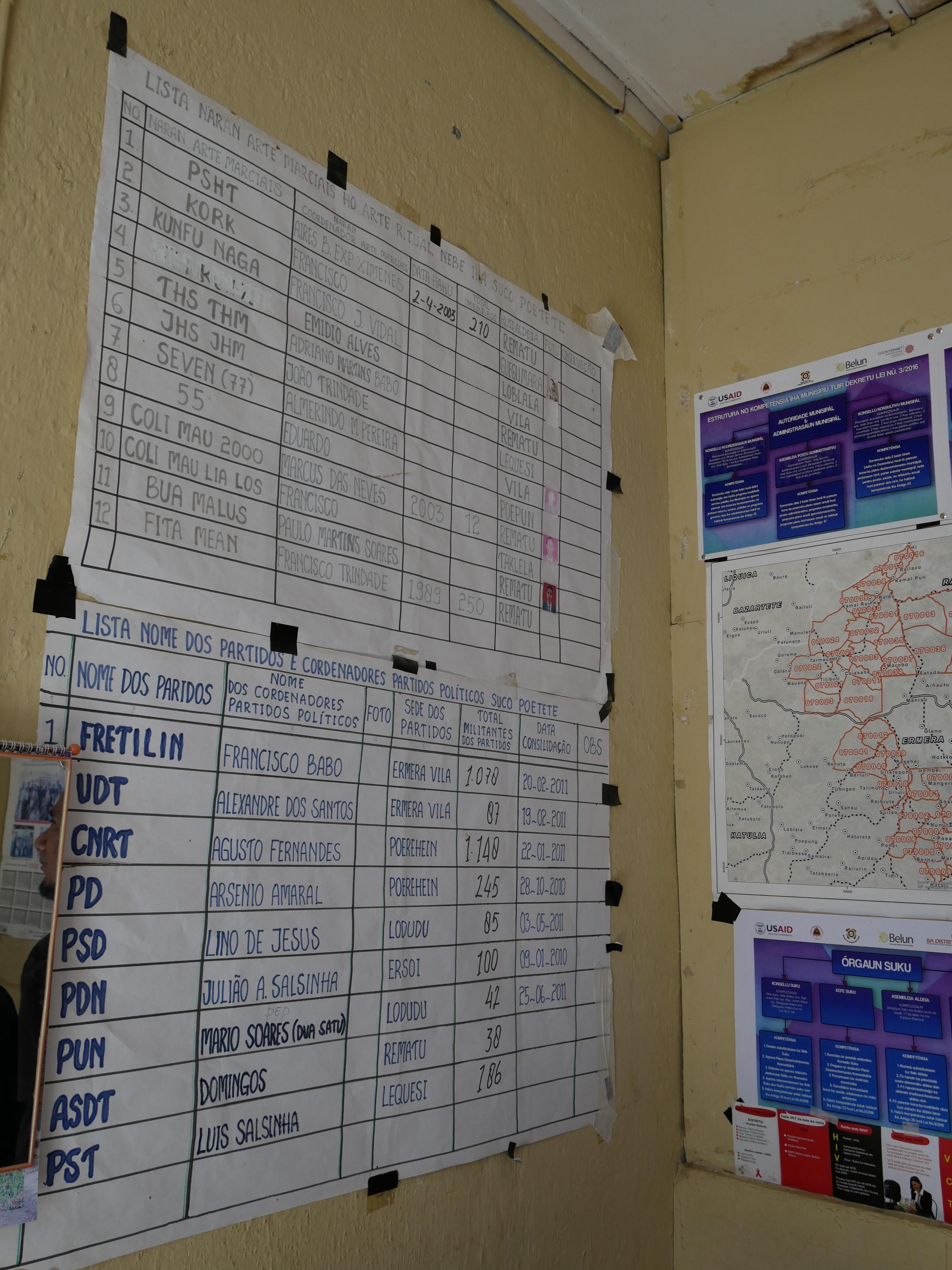
Above: a list of party coordinators for a particular suco. (authors’ photo)
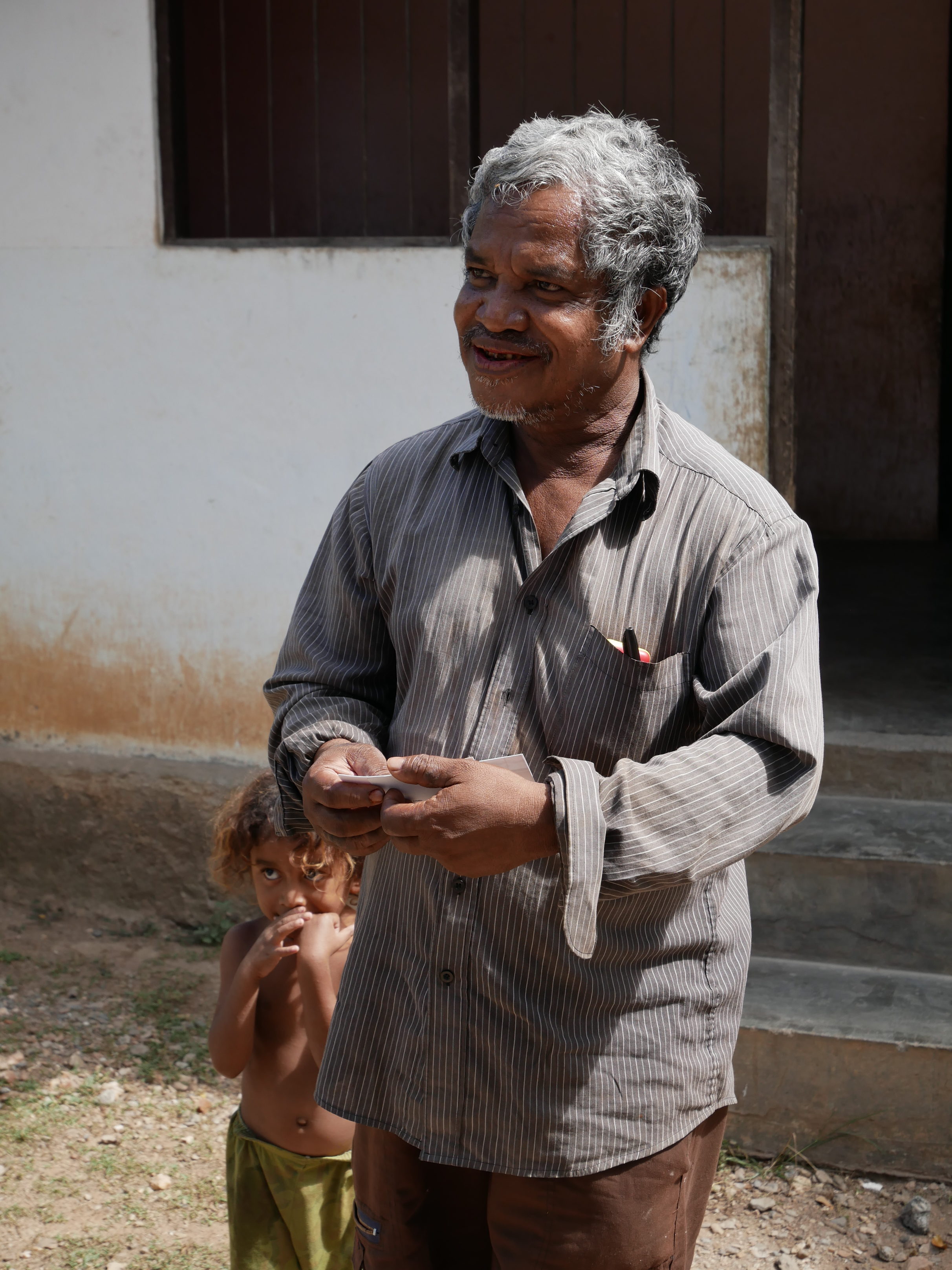
Above: a Fretilin party coordinator during the campaign (authors’ photo)
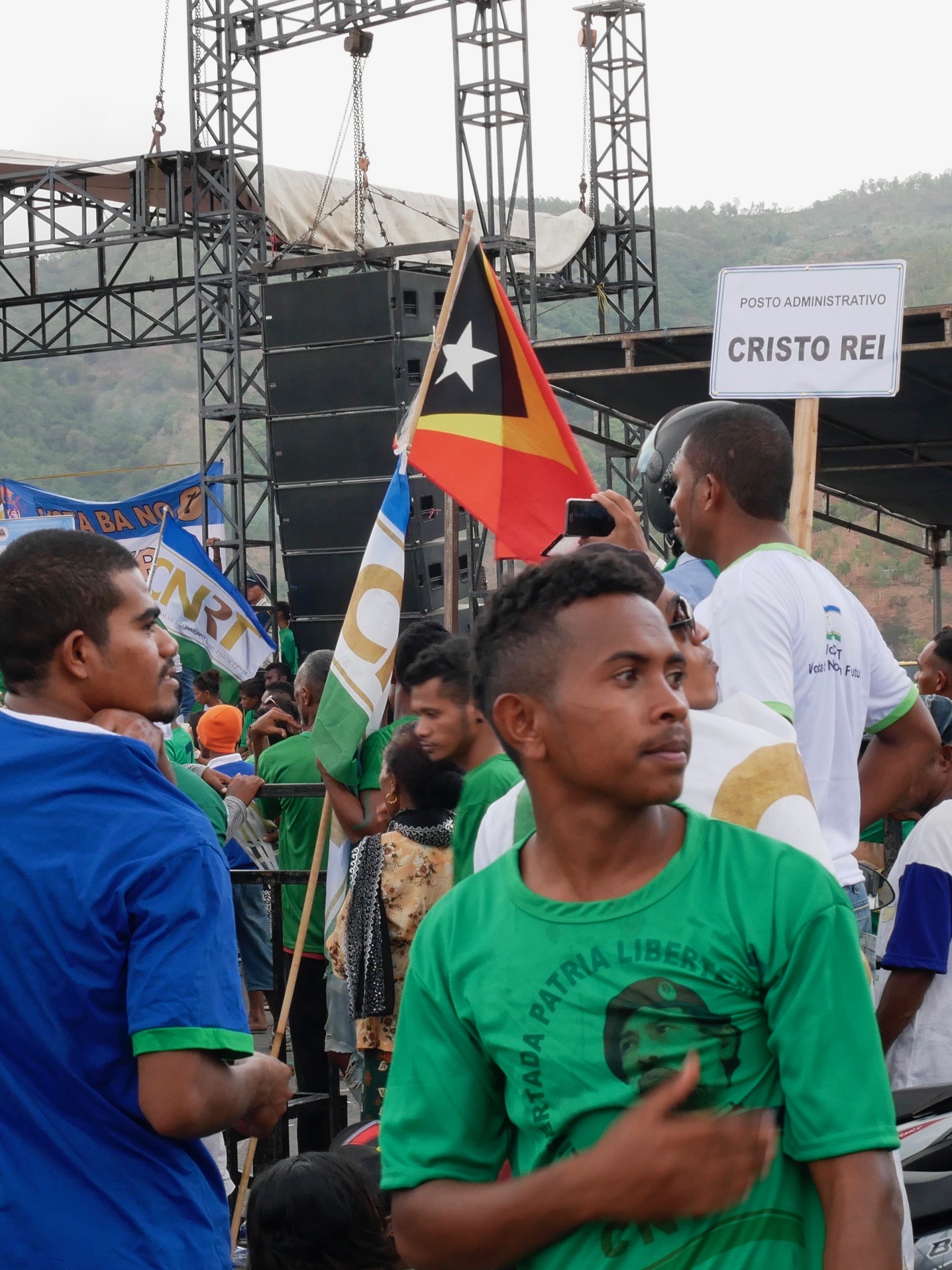
Above: a “check-in” station at a CNRT rally, to count rally-goers from that “posto administrativo” (authors’ photo)
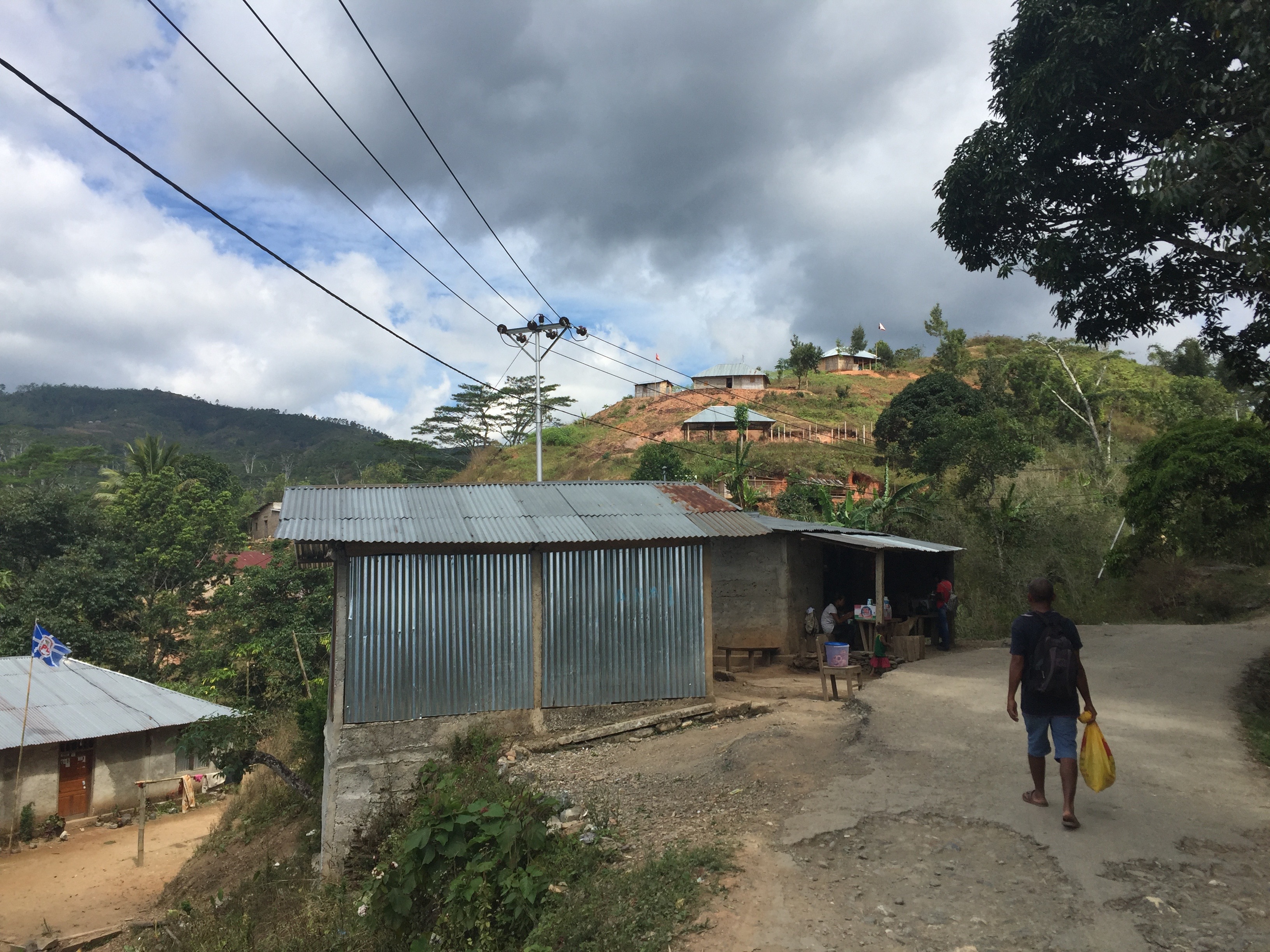
……………
All photographs are taken by the authors.
Meredith Weiss is Professor at the Department of Political Science, University at Albany (SUNY).
Allen Hicken is the Ronald and Eileen Weiser Professor of Emerging Democracies at the Department of Political Science, University of Michigan.
Edward Aspinall is Professor at the Department of Political and Social Change at the Australian National University’s Coral Bell School of Asia Pacific Affairs.
The authors visited Timor-Leste as part of an ongoing multi-country study on ‘money politics’ in Southeast Asia, looking at the role of patronage, vote buying, clientelism and related phenomena. Publications to emerge from this project include a volume edited by Prof Weiss, Electoral dynamics in Malaysia: findings from the grassroots (ISEAS, 2013) and Electoral dynamics in Indonesia: money politics, patronage, and clientelism at the grassroots (NUS Press, 2016), edited by Prof Aspinall and Mada Sukamjati.
 Facebook
Facebook  Twitter
Twitter  Soundcloud
Soundcloud  Youtube
Youtube  Rss
Rss 